🏛️ Sacred Temples
Explore the divine architecture and spiritual significance of India's most revered temples
Search Temples
Find temples by name, location, state, district, or area
Showing 411 temples
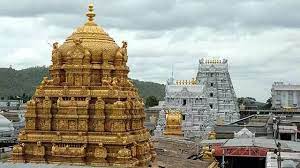
Tirupati Balaji Temple
One of the most visited temples in the world, dedicated to Lord Venkateswara (Balaji). The temple is believed to be the place where Lord Vishnu descended to earth to save humanity from the trials of Kali Yuga.
Major Festivals:

Kedarnath Temple
Located at an altitude of 3,583 meters, this ancient temple is dedicated to Lord Shiva. According to legend, the Pandavas sought the blessings of Lord Shiva here to atone for their sins after the Kurukshetra war.
Major Festivals:

Chandrodaya Mandir
Vrindavan Chandrodaya Mandir is a monumental temple project dedicated to Lord Krishna, being constructed by ISKCON. Planned to be the tallest religious structure in the world (700 ft), it blends traditional temple architecture with modern technology and aims to showcase Krishna's Vrindavan heritage on a global platform.
Major Festivals:

Jagannath Temple
Famous for the annual Rath Yatra festival, this temple is dedicated to Lord Jagannath (Krishna). The temple is believed to house the divine trio - Jagannath, Balabhadra, and Subhadra.
Major Festivals:
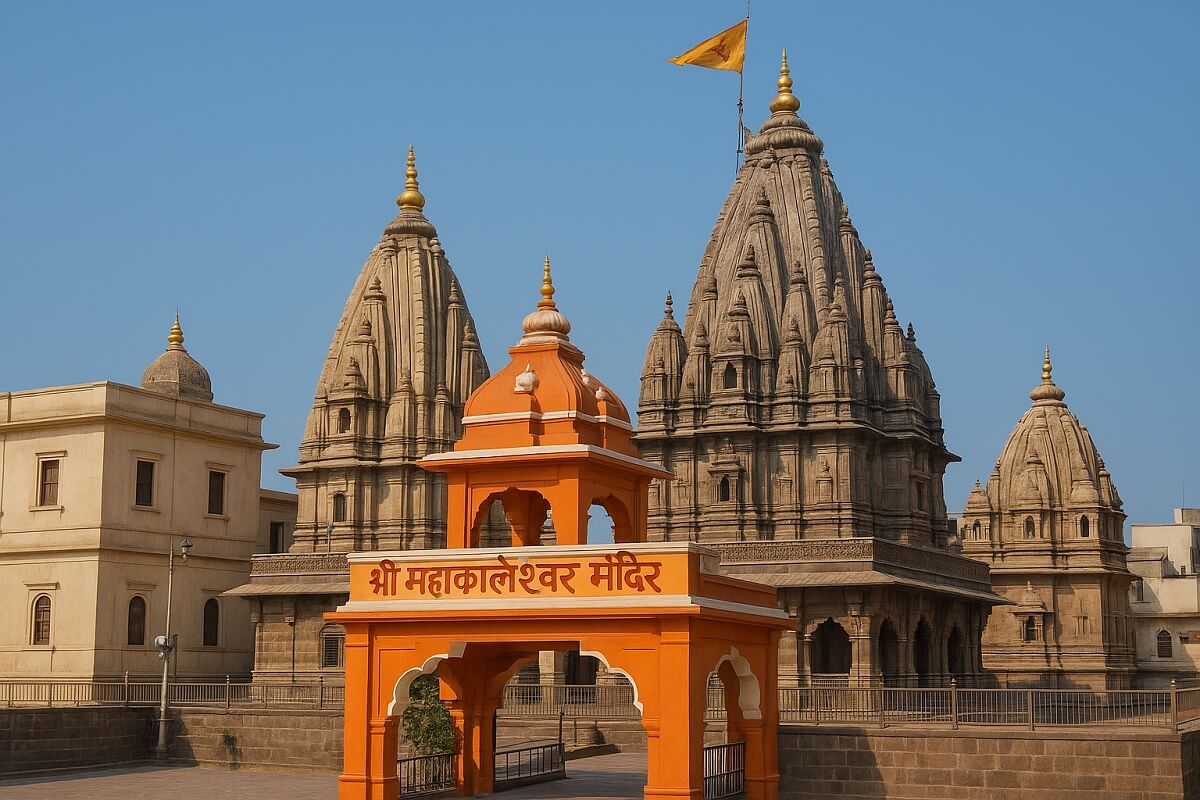
Mahakaleshwar Jyotirlinga
The Mahakaleshwar Temple is one of the most sacred Jyotirlingas, believed to be swayambhu (self-manifested). Revered for its Bhasma Aarti, the temple holds a special place in Shaivism. It is associated with legends of Lord Shiva protecting Ujjain and destroying demons for his devotees.
Major Festivals:
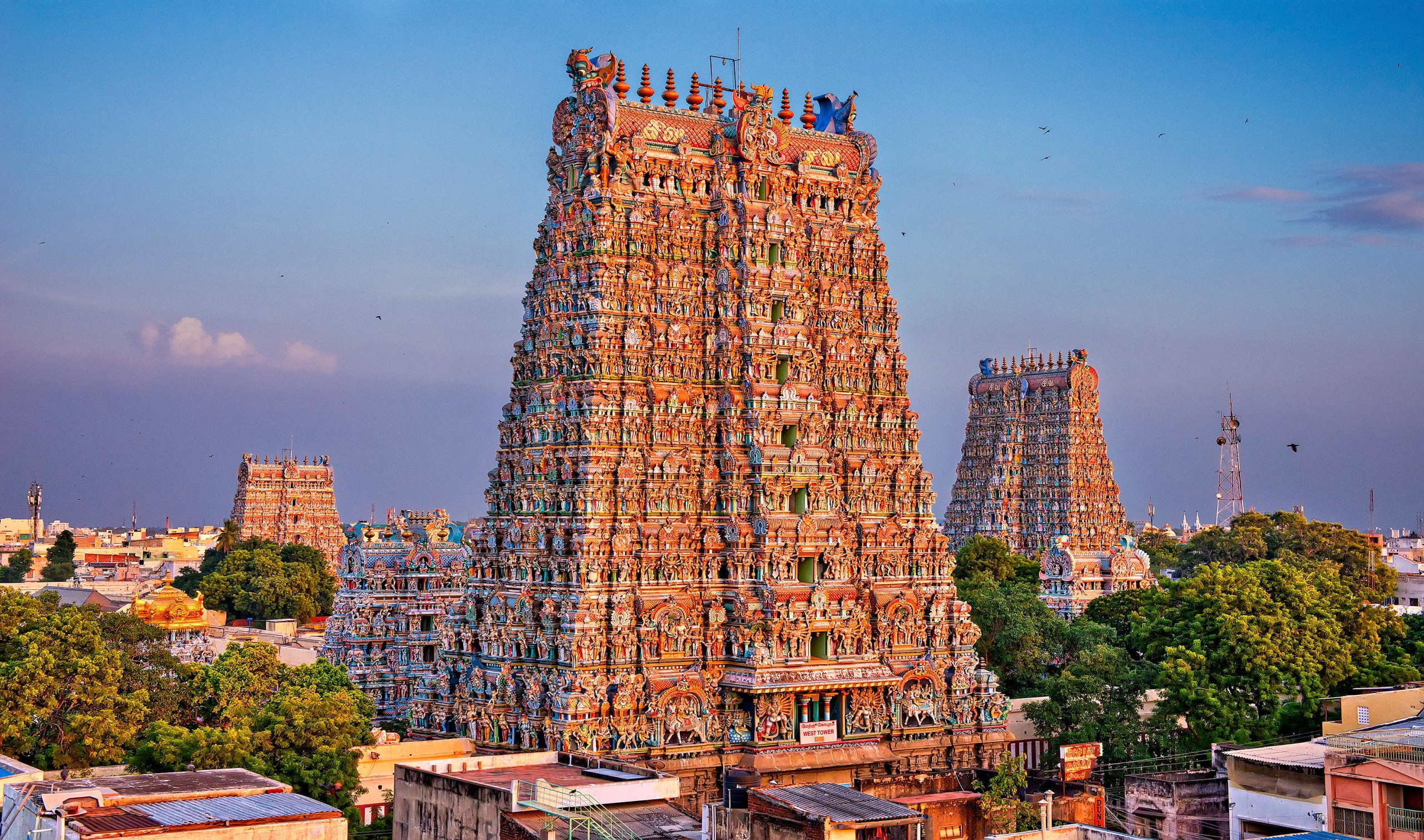
Meenakshi Temple
This historic temple is dedicated to Goddess Meenakshi (Parvati) and her consort Sundareshwar (Shiva). The temple is famous for its stunning architecture with towering gopurams covered in colorful sculptures.
Major Festivals:
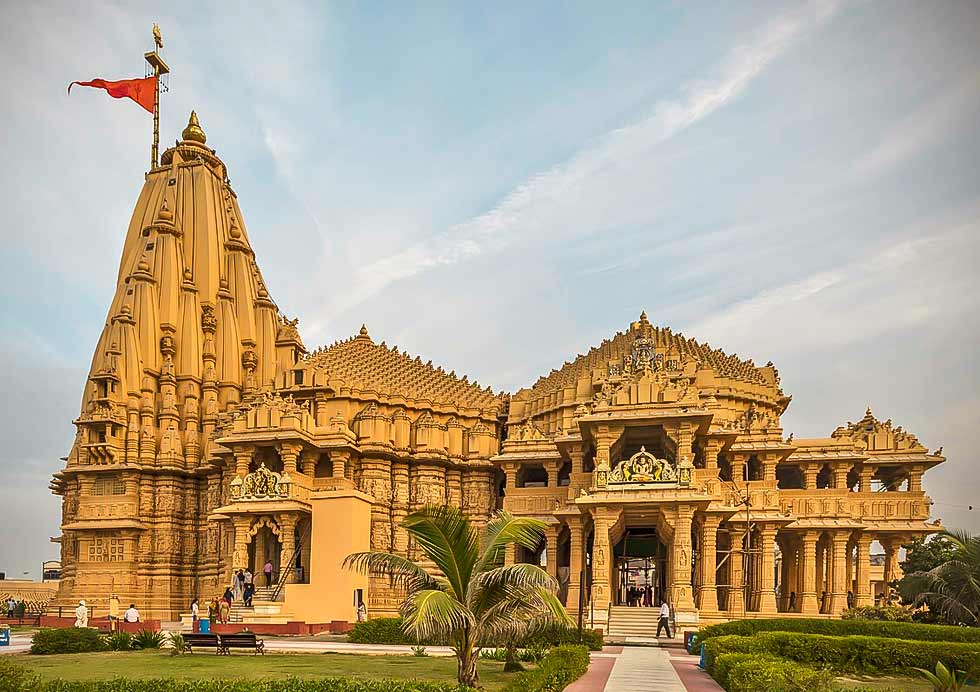
Somnath Temple
Known as the first among the twelve Jyotirlingas, this temple has been destroyed and rebuilt multiple times. It is believed that Lord Shiva first manifested as a Jyotirlinga here.
Major Festivals:

Vaishno Devi Temple
Located in the Trikuta Mountains, this cave temple is dedicated to Goddess Vaishno Devi. Millions of pilgrims trek 13 km to reach the holy cave where the goddess is believed to reside.
Major Festivals:
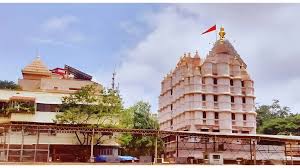
Siddhivinayak Temple
One of the most famous Ganesha temples in India, built in 1801. The temple is known for fulfilling the wishes of devotees and is visited by millions annually.
Major Festivals:
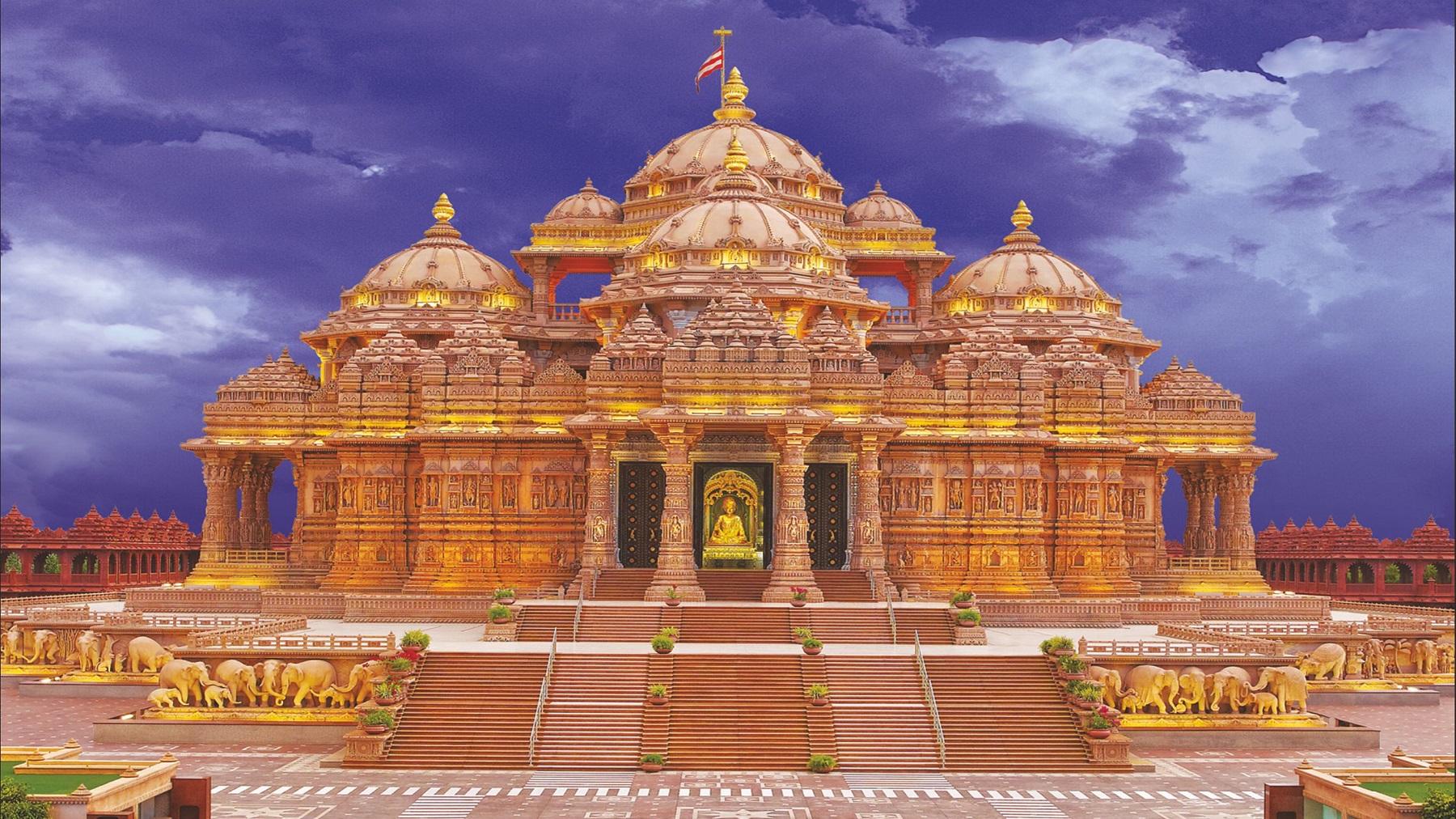
Swaminarayan Akshardham Temple
Opened in 2005, the Akshardham Temple showcases the life of Bhagwan Swaminarayan and Indian culture through intricate carvings, exhibitions, water shows, and a magnificent central temple. Built by BAPS Swaminarayan Sanstha, it stands as a symbol of devotion, art, and spiritual traditions.
Major Festivals:
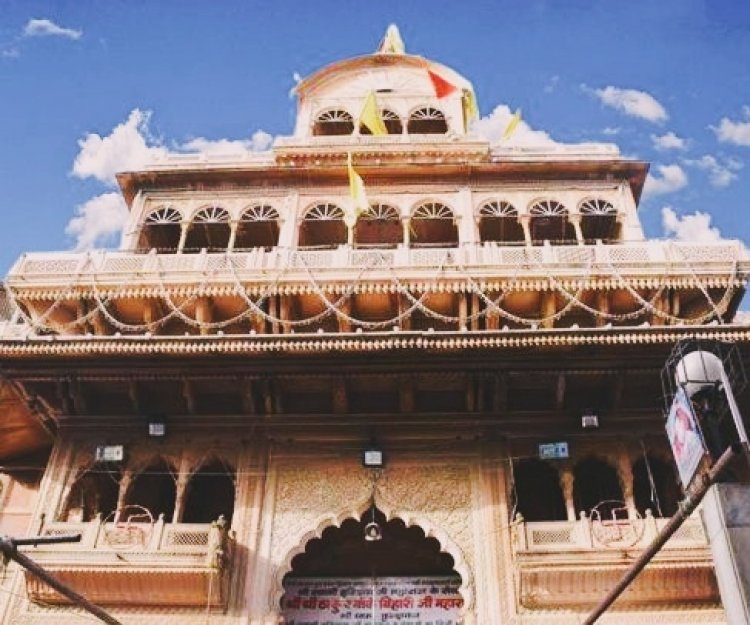
Banke Bihari Temple
One of the most revered temples dedicated to Lord Krishna in the form of Banke Bihari. Built in 1864 by Swami Haridas' disciples, the temple is known for its unique worship style where curtains are drawn frequently to protect devotees from the intense divine presence.
Major Festivals:
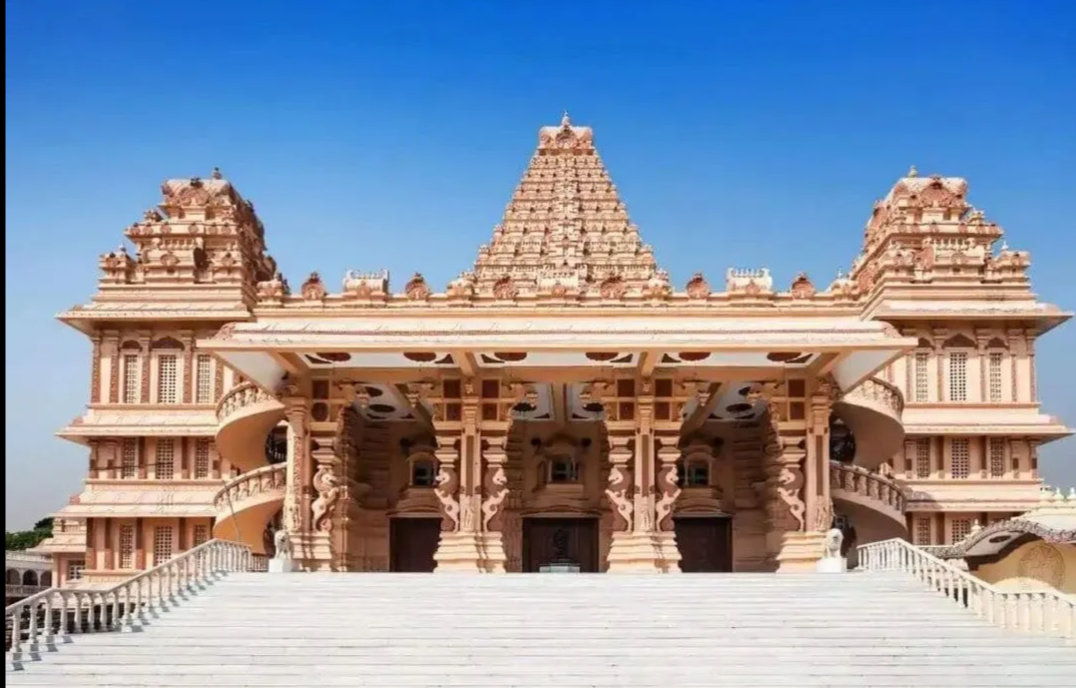
Shri Aadya Katyayani Shakti Peetham
Founded in 1974 by Baba Sant Nagpal Ji on scrubland, the temple grew into a vast marble complex over 60–70 acres. Baba’s samadhi lies inside. The main Katyayani shrine opens bi‑annually during Navratri; devotees tie threads to a wish‑fulfilling peepal tree. The complex houses about 20 temples in three sections, with a striking 101‑ft Hanuman statue.
Major Festivals:
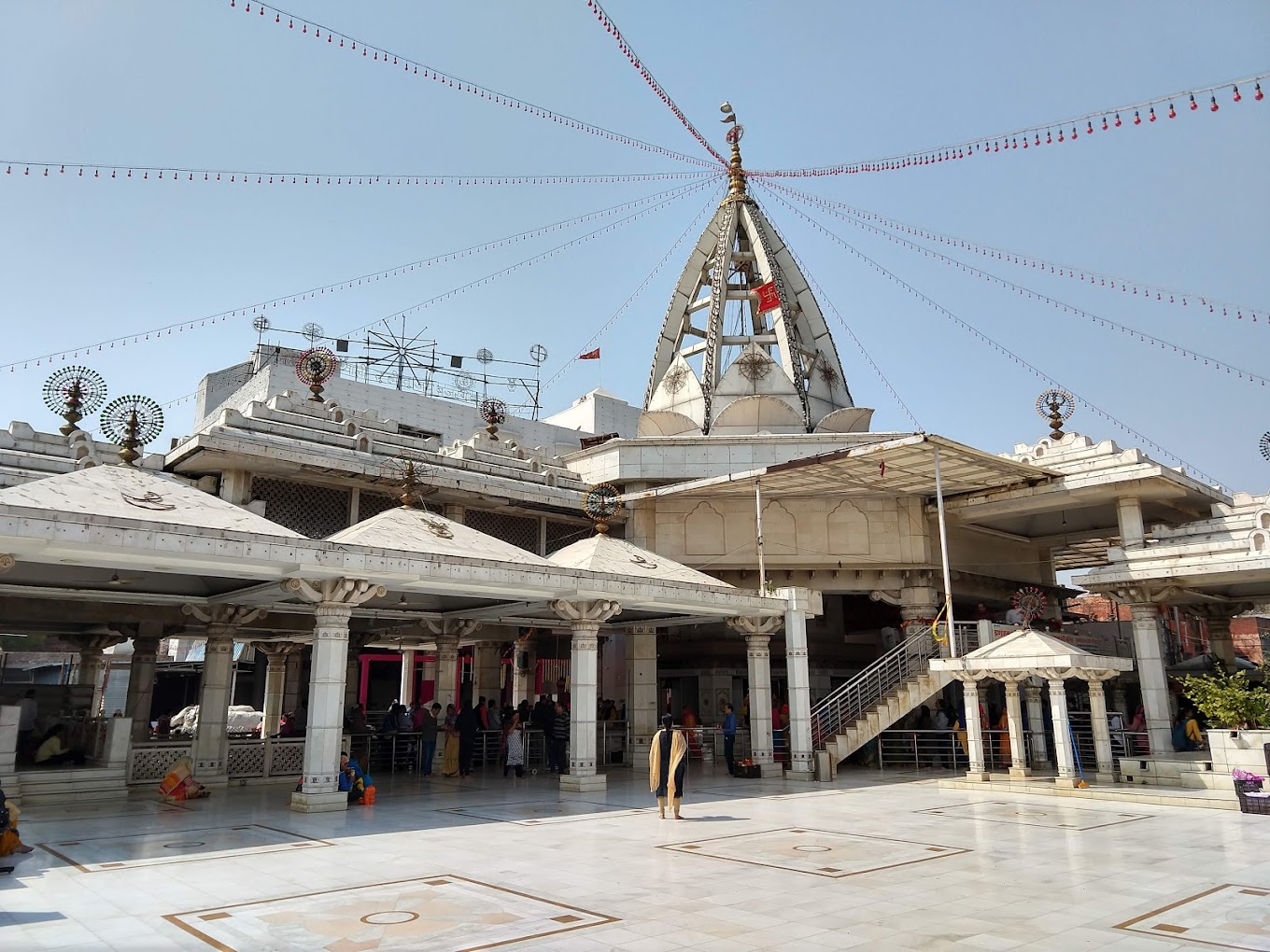
Shri Jhandewalan Mata Mandir
Legend has it that Badri Bhagat dreamt of the goddess, led excavations in the 18th century and found her idol along with a Shivling in an underground cave. Silver hands were added to the damaged idol, and a replica was placed above, giving rise to the cavern shrine (“Gufa Wali”) and the ground-level “Jhande Wali” deity. The temple’s name derives from the prayer flags (‘jhandas’) offered by devotees since Shah Jahan’s reign.
Major Festivals:
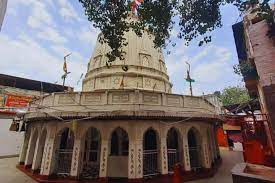
Shri Kalkaji Mandir
Legend says Goddess Kalka (an incarnation of Durga/Kali) emerged here during Satya Yuga to destroy demons; Lord Krishna and the Pandavas worshipped at this site. The current temple was built by the Marathas around 1764–65 AD, with later enhancements by Akbar II’s Peshkar in 1816. The shrine is revered as a self‑manifested ('swayambhu') Jyotirlinga of Shakti.
Major Festivals:
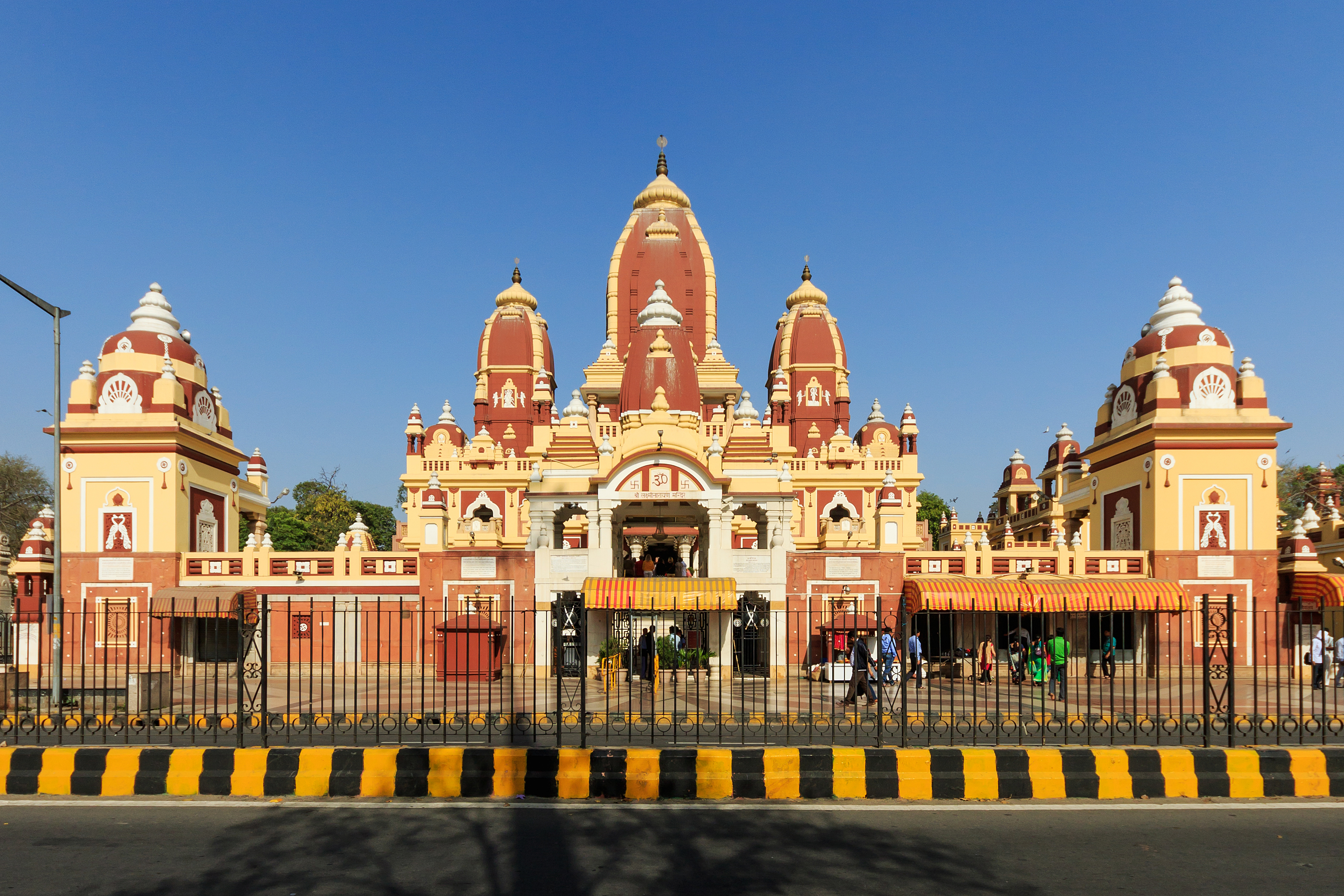
Shri Laxminarayan Temple (Birla Mandir)
Constructed by Baldeo Das Birla and Jugal Kishore Birla from 1933 to 1939, it was inaugurated by Mahatma Gandhi on the condition that it be open to people of all castes and faiths. Designed in Nagara style with white marble and red sandstone, it features a grand central shrine for Laxminarayan (Vishnu with Lakshmi) and side shrines for Shiva, Krishna, Ganesha, Hanuman, Buddha, and Devi Durga.
Major Festivals:
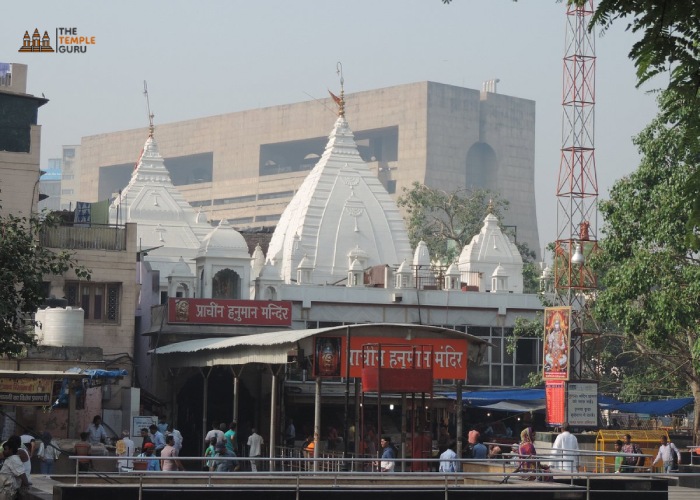
Pracheen Hanuman Mandir
Originally built by Maharaja Man Singh I and reconstructed in 1724 by Maharaja Jai Singh II. Enshrines a self‑manifested idol of Bala Hanuman and features a unique crescent‑moon spire gifted by a Mughal emperor after a miracle by saint Tulsidas. Known for 24‑hour continuous chanting of 'Sri Ram, Jai Ram, Jai Jai Ram' since 1964—a Guinness World Record.
Major Festivals:
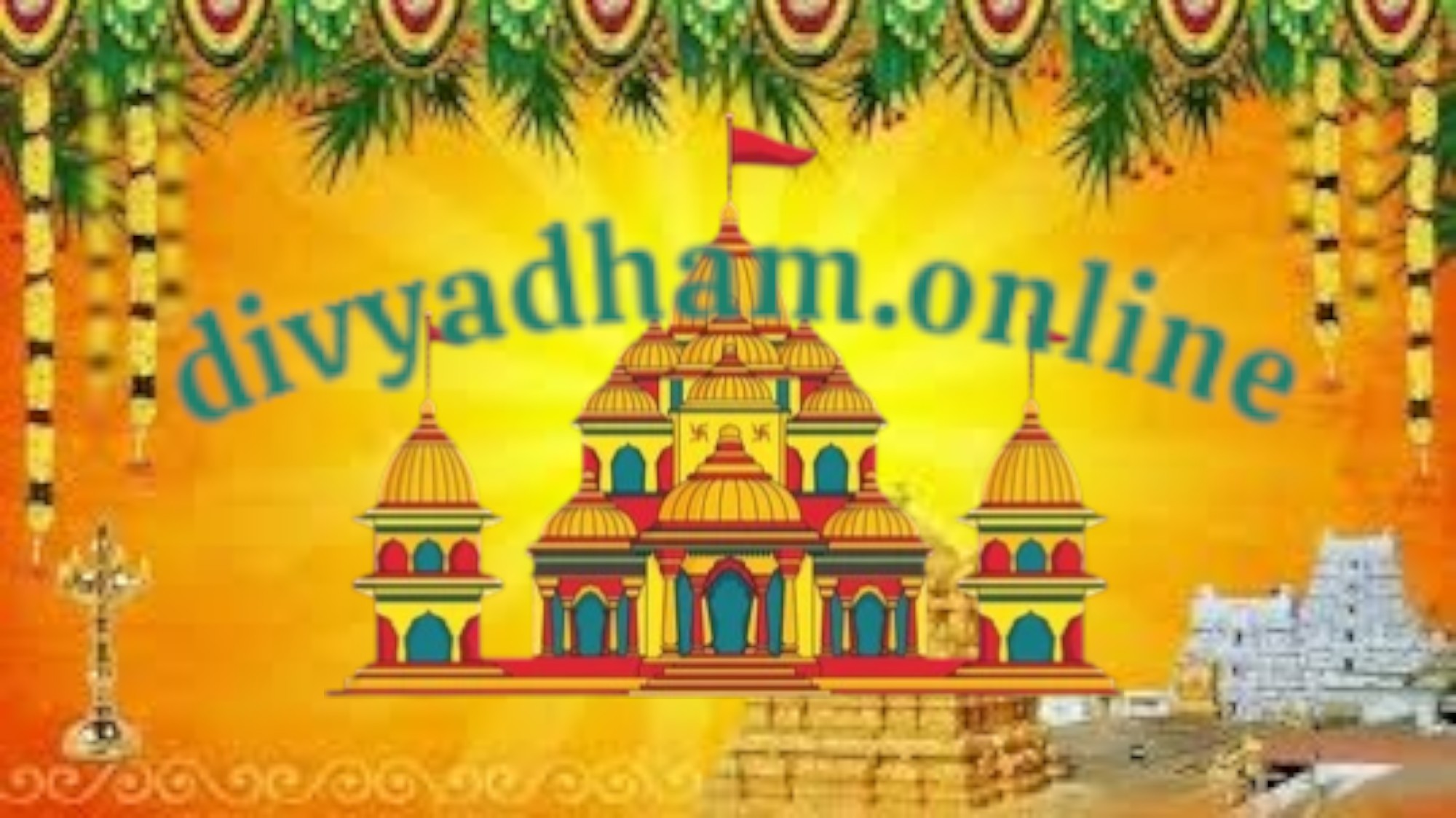
Gauri Shankar Temple
Built around 800 years ago by Maratha soldier Appa Gangadhar who vowed to build it after surviving a battle. The temple houses an 800-year-old Shiva lingam set in a marble structure symbolizing the female organ, surrounded by silver snakes and crowned with a vessel dripping water continuously.
Major Festivals:

Jwala Devi Temple
Legend says that when Sati immolated herself, her tongue fell here, manifesting as perpetual flames. Discovered by a cowherd and built by Raja Bhumi Chand, the temple dates back over a thousand years and has been patronized by rulers including Maharaja Ranjit Singh. The flames are considered manifestations of Goddess Jwala in multiple forms.
Major Festivals:

Tirumala Venkateswara Temple
Believed to be the place where Lord Vishnu manifested as Venkateswara to save mankind. The temple has been patronized by various dynasties over centuries.
Major Festivals:

Srikalahasti Temple
The temple's legend says a spider (Sri), snake (Kala), and elephant (Hasti) were ardent devotees of Shiva, hence the name Srikalahasti.
Major Festivals:

Kanaka Durga Temple
It is believed that Goddess Durga settled here after killing Mahishasura and protects the region from evil.
Major Festivals:

Simhachalam Temple
Built by the Eastern Ganga dynasty; the deity is covered in sandalwood paste throughout the year except on Akshaya Tritiya.
Major Festivals:

Annavaram Satyanarayana Temple
Believed to fulfill wishes through Satyanarayana Swamy Vratam. Built in Dravidian style in the 19th century.
Major Festivals:

Srisailam Mallikarjuna Swamy Temple
Sage Adi Shankara is believed to have visited and composed 'Sivananda Lahari' here. Parvati and Shiva are worshipped together.
Major Festivals:

Lepakshi Veerabhadra Temple
Built in the 16th century by Viranna and Virupanna under the Vijayanagara Empire; linked to the Ramayana where Jatayu fell after battling Ravana.
Major Festivals:

Ahobilam Narasimha Temple
Believed to be the place where Lord Narasimha killed demon Hiranyakashipu. Each form is associated with a different legend and location within the hills.
Major Festivals:

Mangalagiri Panakala Narasimha Swamy
Believed to be self-manifested; legend says the mouth of the deity accepts Panakam offered by devotees.
Major Festivals:

Dwaraka Tirumala Temple
Discovered by sage Dwaraka who meditated until he found the self-manifested idol of Lord Venkateswara.
Major Festivals:

Ryali Jagan Mohini Temple
The rare idol carved from a single black stone is believed to represent Vishnu's Mohini avatar who distributed Amrit to gods.
Major Festivals:

Bhavanarayana Swamy Temple
Said to be built by the Cholas; highly revered locally for its annual chariot festival.
Major Festivals:

Arasavalli Surya Temple
Believed to have been built by Kalinga kings; Surya idol carved from a single black granite stone.
Major Festivals:

Srikakula Andhra Maha Vishnu Temple
Considered sacred by locals and said to be a Vaishnava Kshetra mentioned in Skanda Purana.
Major Festivals:

Gandikota Fort Temple
Built by Pemmasani Nayaks; dedicated to Ranganatha Swamy and Madhavaraya; surrounded by natural canyon views.
Major Festivals:

Bhairavakona Caves Temple
Ancient cave temple where Lord Shiva is said to have appeared. Features Ashta Lakshmi sculptures and rare rock carvings.
Major Festivals:

Mantralayam Raghavendra Swamy Mutt
Raghavendra Swamy entered Jeeva Samadhi here in 1671; believed to bless devotees for 700 years from the samadhi.
Major Festivals:

Pithapuram Kukkuteswara Swamy Temple
Considered one of the 18 Maha Shakti Peethas; associated with Sati’s left hand falling here.
Major Festivals:

Srikurmam Kurmanathaswamy Temple
Built during the Eastern Ganga period; idol is a rare depiction of Kurma with yogic features.
Major Festivals:

Parshuram Kund
Legend states that Parshuram, after killing his mother at his father's command, came here to cleanse his sins in the holy waters of the Lohit River. The site draws thousands of pilgrims during Makar Sankranti.
Major Festivals:

Malinithan Temple
Associated with the legend of Lord Krishna and Rukmini’s marriage, where they stopped at this site. The ruins date back to the 10th-12th centuries with exquisite sculptures of Durga, Nandi, and other deities.
Major Festivals:

Akashiganga Temple
The temple and sacred stream nearby are associated with the myth of Sati’s self-immolation and Lord Shiva’s Tandav. Pilgrims take holy dips here, believing it purifies sins.
Major Festivals:

Tawang Monastery
Founded by Merak Lama Lodre Gyatso in 1680 with the support of the 5th Dalai Lama, it belongs to the Gelug school of Mahayana Buddhism and is a spiritual center for the Monpa people.
Major Festivals:

Gompa Mandir Itanagar
Built with the blessings of the Dalai Lama, this temple serves as a spiritual and cultural hub for the local Buddhist community.
Major Festivals:

Bhismaknagar Fort
Said to be the capital of the Chutia Kingdom, legend connects this fort to Princess Rukmini’s abode. Ancient ruins suggest a flourishing Hindu kingdom here.
Major Festivals:

Mechuka Monastery
Dating back 400+ years, it's one of the oldest monasteries in Arunachal Pradesh. Revered by Memba and other local tribes for its sacred atmosphere.
Major Festivals:

Urguelling Monastery
A spiritually significant monastery for the Monpa people. The peaceful complex is considered sacred due to its association with the Dalai Lama’s lineage.
Major Festivals:

Sidheshwar Nath Temple
Discovered by the locals and declared a spiritual site, the naturally formed Shiva lingam is believed to be self-manifested (Swayambhu).
Major Festivals:

Kardo Hills Temple
The location holds mythological relevance with many pilgrims visiting the natural rock formation considered divine.
Major Festivals:

Tungapadar Shiv Mandir
A sacred place of worship with local traditions interwoven with Shaivism. Acts as a community center during tribal festivals.
Major Festivals:

Ganga Lake Temple
This temple is nestled in a serene lake area believed to have sacred waters. Locals often perform rituals here seeking blessings.
Major Festivals:

Kamakhya Temple
Legend says Goddess Kamakhya formed herself from the yoni of Sati; annual Ambubachi Mela celebrates this divine menstruation.
Major Festivals:

Umananda Temple
Built by King Gadadhar Singha in 1694; believed to be the spot where Shiva burned Kamadeva with his third eye.
Major Festivals:

Navagraha Temple
Built in the 18th century by Ahom king Rajeswar Singha; each graha (planet) has its own shrine.
Major Festivals:

Maha Bhairav Temple
Originally built by legendary King Banasura and later rebuilt; bhang is offered during Shivaratri.
Major Festivals:

Basistha Ashram
Legend recounts Sage Vashistha’s meditation here; current Shiva temple built by Ahom king Rajeswar Singha in 1764 :contentReference[oaicite:1]{index=1}.
Major Festivals:

Sukreswar Temple
Constructed in 1744 by King Pramatta Singha, patronized by Rajeswar Singha :contentReference[oaicite:2]{index=2}.
Major Festivals:

Doul Govinda Temple
Moved from Sandhyasar to North Guwahati by Ganga Ram Barooah; renovated in 1966; temple draws 5,000+ devotees during the five-day Holi festival :contentReference[oaicite:3]{index=3}.
Major Festivals:

Asvakranta Temple
Believed that Lord Krishna's horse rested here before slaying Narakasur; temples built in the 1720s by King Shiva Singha :contentReference[oaicite:4]{index=4}.
Major Festivals:

Dirgheswari Temple
Located near Umananda Island; devotees perform ablutions in the river before worship.
Major Festivals:

Hayagriva Madhava Temple
Originally built by Pala dynasty; rebuilt in 1583 by Koch king Raghudeva Narayan. Stone structure with elephant carvings, reliefs of Dashavatara, and perpetually lit lamp :contentReference[oaicite:5]{index=5}.
Major Festivals:

Tilinga Mandir
Dedicated to Shiva; devotees tie bells and tridents as offerings.
Major Festivals:

Madan Kamdev Temple
Ruins showcase erotic carvings; site destroyed and later rediscovered.
Major Festivals:

Mahamaya Temple
Patronised by locals including Kachari, Koch; worshipped since ancient times—festival Durga Puja draws huge crowds :contentReference[oaicite:6]{index=6}.
Major Festivals:

Shiva Doul
Built by Ahom kings in the 18th century; set within a tank (Sivasagar Tal).
Major Festivals:

Da Parbatia Temple
Excavated temple near Tezpur; features Ganesha, Surya, Durga idols.
Major Festivals:

Bordowa Than
Founded in 1468 by Sankardev; hosts ‘Doul Jatra’ and Sankardev Utsav every year :contentReference[oaicite:7]{index=7}.
Major Festivals:

Sri Sri Auniati Satra
Holds traditional performances, manuscripts, and religious learning; central to Assamese neo-Vaishnavite culture.
Major Festivals:

Sri Sri Dakhinpat Satra
Works as cultural hub preserving neo-Vaishnavite traditions; faced erosion threats and relocation by riverbank.
Major Festivals:

Barpeta Satra
Famous for Bhaona theatre, literature, and classic Assamese harp Aaina.
Major Festivals:

Bhimeswar Dham
Local legend connects installation of lingam to Bhima of Mahabharata.
Major Festivals:

Mahabodhi Temple
Built by Emperor Ashoka in the 3rd century BCE; current structure dates to 5th–6th century CE; retains descendant of original Bodhi Tree :contentReference[oaicite:1]{index=1}
Major Festivals:

Vishnupad Temple
Legend says Vishnu stood here to vanquish demon Gayasur, leaving his footprint on the rock; temple structure ~170 ft tall :contentReference[oaicite:2]{index=2}
Major Festivals:

Mundeshwari Temple
Claims origins in 108 CE; octagonal Nagara‑style temple dedicated to Durga and Shiva :contentReference[oaicite:3]{index=3}
Major Festivals:

Patan Devi Temple (Bari & Chhoti)
Right thigh of Sati fell here; Bari (main) and Chhoti (small) shrines face Ganges; built over centuries :contentReference[oaicite:4]{index=4}
Major Festivals:

Mahavir Mandir
Dedicated to Lord Hanuman; manages hospitals, food kitchens and community services; earns highest in region :contentReference[oaicite:5]{index=5}
Major Festivals:

Baiju Temple
Ancient temple; details limited
Major Festivals:

Bhootnath Temple
Accessible 24/7; beloved by residents for daily worship
Major Festivals:

Naulakha Temple
Details not available
Major Festivals:

Deo Surya (Sun) Temple
Built in 5th–8th century on Brahma Kund; 100‑ft tall west‑facing shrine believed by ASI to be built overnight by Vishwakarma :contentReference[oaicite:6]{index=6}
Major Festivals:

Thawe Mandir
Known locally as Thawe wali Mai; draws regional pilgrims
Major Festivals:

Shiv Shakti Temple
Popular rest-stop temple for devotees en route
Major Festivals:

Jal Mandir
Built in mid-1800s; located at Moksha site of Mahavira on water :contentReference[oaicite:7]{index=7}
Major Festivals:

Kesariya Stupa
Believed to contain relics of Buddha; large brick monument of archaeological importance
Major Festivals:

Sitamarhi Janaki Temple
Center for Sita worship and Ramayana lore; major during Ram Navami
Major Festivals:

Ajgaivinath Temple
Pilgrims ferry Ganges water from here to Gaya for Vishnupad rituals
Major Festivals:

Barabar Caves
Inscribed by Ashoka & others; earliest carved religious structures in India :contentReference[oaicite:8]{index=8}
Major Festivals:

Mahabodhi Temple
Built by Emperor Ashoka in the 3rd century BCE; marks the site under the Bodhi Tree where Buddha meditated
Major Festivals:

Vishnupad Temple
Footprint of Lord Vishnu is believed to have been imprinted while subduing demon Gayasura
Major Festivals:

Mundeshwari Temple
Dedicated to Goddess Durga as Mundeshwari Devi and Lord Shiva
Major Festivals:

Patan Devi Temple
Divided into Bari Patan Devi and Chhoti Patan Devi, both considered sacred
Major Festivals:

Mahavir Mandir
Managed by Mahavir Mandir Trust; visited by lakhs of devotees during Ram Navami
Major Festivals:

Deo Sun Temple
Sun God is worshipped in east-facing temple; associated with Chhath Puja
Major Festivals:

Jal Mandir
A Jain temple built in the middle of a lotus pond where Lord Mahavira was cremated
Major Festivals:

Kesariya Stupa
Said to be built by Mauryan emperor Ashoka; visited by Buddha before his Nirvana
Major Festivals:

Barabar Caves
Built during Mauryan period; associated with Ajivika sect, later used by Hindus and Jains
Major Festivals:

Kashi Vishwanath Temple
Believed to be the first Jyotirlinga. Destroyed and rebuilt several times, current structure built by Ahilyabai Holkar in 1780. The jyotirlinga is said to be self-manifested.
Major Festivals:

Shri Krishna Janmabhoomi
Built at the exact prison cell where Krishna was born. Original temple destroyed by Aurangzeb who built Idgah there. Current complex developed after independence.
Major Festivals:

Banke Bihari Temple
Idol discovered by Swami Haridas (guru of Tansen). The deity's eyes are so captivating that devotees are only allowed darshan through curtains at times.
Major Festivals:

Prem Mandir
Built by spiritual leader Kripalu Maharaj, inaugurated in 2012. The temple illuminates at night with 3D light shows depicting Krishna's leelas.
Major Festivals:

Dwarkadhish Temple
Built in 1814 by Seth Gokul Das Parikh. The shikhara rises to 90 feet with beautiful paintings of Krishna's life.
Major Festivals:

Sankat Mochan Hanuman Temple
Established by Goswami Tulsidas who wrote Ramcharitmanas here. The temple survived a terrorist attack in 2006.
Major Festivals:

Durga Kund Mandir
Built in 18th century in North Indian Nagara style. The Durga idol is said to be self-manifested (swayambhu).
Major Festivals:

Annapurna Devi Temple
Legend says Shiva came here as beggar and Annapurna fed him. The golden idol is only displayed during Annakoot festival.
Major Festivals:

Tulsi Manas Mandir
Built in 1964 by Sureka family. Walls have entire Ramcharitmanas inscribed on marble slabs with beautiful dioramas.
Major Festivals:

Alopi Devi Temple
Believed to be the place where last part of Sati's body disappeared (alop). The temple marks the end of 51 Shaktipeeth yatra.
Major Festivals:

Bharat Mata Mandir
Inaugurated by Mahatma Gandhi in 1936. Features a relief map of undivided India carved in marble, symbolizing unity.
Major Festivals:

Vindhyachal Temple
Believed to be where Sati's right toe fell. The goddess is worshipped as Vindhyavasini. Mentioned in Markandeya Purana.
Major Festivals:

Shaktipeeth Maa Lalita Devi
One of the 18 Maha Shaktipeeths. The goddess is worshipped as Lalita (playful form of Durga).
Major Festivals:

Chitrakoot Ramghat Temples
Numerous temples mark spots from Ramayana - Bharat Milap, Sphatik Shila, Kamadgiri. The ghats witness daily aarti with floating lamps.
Major Festivals:

Kaal Bhairav Temple
Legend says Bhairav cut off Brahma's fifth head and was cursed to roam with it until reaching Kashi. The skull fell here.
Major Festivals:

Ram Janmabhoomi
Site of ancient temple destroyed in 1528. After legal battle, new temple constructed and inaugurated in 2024.
Major Festivals:

Hanuman Garhi
Built by Nawab of Awadh in 10th century. 76 steps lead to temple where Hanuman is believed to live in cave guarding Ramkot.
Major Festivals:

Kanak Bhawan
Current structure built by Queen Vrishbhanu Kunwari of Orchha in 1891. Known for gold-crowned idols of Rama-Sita.
Major Festivals:

Nageshwar Nath Temple
Built by Rama's son Kush to atone for killing a snake (nag). The shivalinga is said to be installed by Kush himself.
Major Festivals:

Tapeshwari Devi Temple
Associated with Guru Gorakhnath's tapasya. The goddess is worshipped as both gentle (Tapeshwari) and fierce (Chamunda).
Major Festivals:

Gorakhnath Temple
Established by yogi Gorakhnath in 12th century. The temple has samadhi of Mahant Digvijaynath who played key role in Ayodhya movement.
Major Festivals:

Sita Samahit Sthal
After being abandoned by Rama, Sita took refuge in Valmiki's ashram and later merged into earth here when asked for another agnipariksha.
Major Festivals:

Devipatan Temple
Established by Adi Shankaracharya. The temple has unique tantric traditions and is associated with legend of demon Tarakasur's death.
Major Festivals:

Mahakaleshwar Temple
Believed to be self-manifested (Swayambhu). The temple was rebuilt by the Marathas after destruction by Iltutmish. The Bhasma Aarti performed with sacred ashes is unique to this temple.
Major Festivals:

Omkareshwar Temple
According to legend, Vindhya mountain worshipped Shiva here to atone for sins. The lingam is said to have emerged from the Narmada river itself.
Major Festivals:

Mamleshwar Temple
Legend says when Shiva appeared as Omkareshwar on one bank, Parvati appeared as Mamleshwar on opposite bank. The temple has exquisite carvings from Paramara period.
Major Festivals:

Kaal Bhairav Temple
The temple houses an unusual black stone idol of Kaal Bhairav seated with a dog. Liquor is offered as prasad in this tantric shrine.
Major Festivals:

Harsiddhi Temple
The temple has two unique deepstambhas (lamp towers) installed by Maratha rulers. It's believed Krishna and Balram performed penance here.
Major Festivals:

Chintaman Ganesh Temple
Believed to be established by Lord Rama during exile. The swayambhu idol has its trunk turned right (rare form).
Major Festivals:

Bade Ganeshji Ka Mandir
The 25-feet tall idol was installed in 20th century. The temple complex also houses replicas of all 12 Jyotirlingas.
Major Festivals:

Shri Pitambara Peeth
Established by sage Dattatreya. The temple's golden idol of Bagalamukhi (Pitambara) is believed to fulfill wishes when worshipped with proper rituals.
Major Festivals:

Shri Ram Raja Temple
Built by Madhukar Shah in 16th century when Rama appeared in his dream. The deity was supposed to be installed in Chaturbhuj Temple but refused to move.
Major Festivals:

Kandariya Mahadeva Temple
Built by Chandela king Vidyadhara in 11th century. The temple's 872 erotic sculptures represent spiritual union with divine.
Major Festivals:

Lakshmana Temple
Built by Chandela king Yasovarman. The temple's foundation inscription mentions original name as 'Lakshavarman' and its Vaikuntha Vishnu idol.
Major Festivals:

Chausath Yogini Temple
Built in 10th century by Kalachuri dynasty. The open-air temple has 64 chambers for yoginis and one central shrine for Shiva-Bhairav.
Major Festivals:

Bhojeshwar Temple
Built by legendary king Bhoja in 11th century. The 7.5 feet lingam and architectural plans carved on surrounding rocks show ancient engineering skills.
Major Festivals:

Teli Ka Mandir
Built in 9th century by oil merchants (teli). The temple's unusual shikhara resembles Dravidian vimana though built in North India.
Major Festivals:

Gajanan Maharaj Temple
The 20th century saint predicted his samadhi location. The temple complex includes Anand Sagar - an artificial lake with musical fountains.
Major Festivals:

Salkanpur Temple
The temple can only be reached by climbing 1,000 steps. Legend says the goddess appeared to a shepherd and asked to be installed here.
Major Festivals:

Jain Temples
Built between 13th-14th century. The temples are carved into mountain with natural waterfalls. Main temple houses idol of Lord Parshvanath.
Major Festivals:

Asirgarh Temple
The fort was known as 'Key to Deccan'. The temple has unique Shiva lingam with four faces representing Brahma, Vishnu, Rudra and Surya.
Major Festivals:

Annapurna Temple
Built by Ahilyabai Holkar in 18th century. The temple's golden idol is only displayed during Annakoot festival when 56 food items are offered.
Major Festivals:

Khajrana Ganesh Temple
Built by Ahilyabai Holkar after discovering a farmer ploughing had struck the self-manifested idol. The idol grows in size annually according to devotees.
Major Festivals:

Brahma Temple
According to legend, Brahma performed a yagna here after killing demon Vajranabha with lotus petals. The temple dates back to 14th century with distinct red pinnacle (shikhar).
Major Festivals:

Eklingji Temple
Built in 8th century by Bappa Rawal. The four-faced black marble Shiva lingam was protected by Maharanas even during Mughal rule. Complex has 108 temples.
Major Festivals:

Karni Mata Temple
Built in 15th century by Maharaja Ganga Singh. Legend says Karni Mata (incarnation of Durga) transformed her clan members into rats to avoid Yama.
Major Festivals:

Mehandipur Balaji Temple
The self-manifested idols of Balaji (Hanuman), Pretraj (King of Spirits) and Bhairava appeared in 18th century. Tantric rituals performed openly.
Major Festivals:

Khatushyamji Temple
Dedicated to Barbarika (grandson of Bhima) who sacrificed his head in Mahabharata war. Krishna blessed him to be worshipped as Khatushyam in Kaliyuga.
Major Festivals:

Salasar Balaji Temple
In 1754, a farmer found Hanuman idol while ploughing. Same night, a merchant dreamt of Balaji asking to install it here. Temple built within 9 months.
Major Festivals:

Govind Dev Ji Temple
The 15th century idol was brought from Vrindavan by Raja Sawai Jai Singh II who saw Krishna in dream. Temple designed like Nandi Maharaja's Vrindavan courtyard.
Major Festivals:

Birla Mandir
Built in 1988 by Birla family. Walls feature quotes from Upanishads and Gita. The three-storied temple blends ancient and modern architectural styles.
Major Festivals:

Garh Ganesh Temple
Established by Maharaja Sawai Jai Singh II before founding Jaipur. The child-form Ganesha idol is believed to be growing in size annually.
Major Festivals:

Rani Sati Temple
Built in 16th century to honor Narayani Devi who performed sati after husband's death. The temple's marble carvings depict her story. Controversial but attracts many merchants.
Major Festivals:

Shila Devi Temple
Maharaja Man Singh I brought the idol after Kali appeared in dream during battle. The black stone idol is worshipped with sword offerings for protection.
Major Festivals:

Ambika Mata Temple
Built by Gurjara-Pratihara dynasty. The temple features erotic sculptures similar to Khajuraho and detailed carvings of Durga's battles with demons.
Major Festivals:

Chamunda Mata Temple
Idol brought from Mandore by Rao Jodha in 1460. The fierce form of Durga is worshipped with animal sacrifices (now symbolic) during Navratri.
Major Festivals:

Kaila Devi Temple
Built in 12th century. The twin goddesses Kaila (Mahalakshmi) and Chamunda are worshipped together. Temple known for grand fair during Chaitra month.
Major Festivals:

Tanot Mata Temple
Managed by BSF. During 1965 war, Pakistani shells fell but none exploded. The unexploded bombs are displayed in temple museum as miracle.
Major Festivals:

Harshnath Temple
Built by Chahamana dynasty. The temple was center of Shaivite learning. The ruined complex shows exquisite carvings of Shiva's tandav and other legends.
Major Festivals:

Parshuram Mahadev Temple
Natural cave with Shiva lingam where sage Parshuram performed penance. The temple has perennial water stream believed to have healing properties.
Major Festivals:

Sundha Mata Temple
Built in 13th century. The temple has 10th century inscriptions about Chalukya kings. Water from natural springs here never dries up.
Major Festivals:

Jagdish Temple
Built in 1651 by Maharana Jagat Singh I. The three-storied black stone idol of Vishnu was brought from Delhi. Temple features Indo-Aryan architecture.
Major Festivals:

Somnath Jyotirlinga Temple
Destroyed and rebuilt 17 times. Last destruction by Mahmud Ghazni in 1026 AD. Current structure built in 1951 under Sardar Patel's guidance. The temple marks where Moon God (Soma) was cured by Shiva.
Major Festivals:

Dwarkadhish Temple
Believed to be Krishna's kingdom. Original temple built by Vajranabha (Krishna's grandson). Current 5-story structure from 16th century with 72 pillars. Flag changes thrice daily.
Major Festivals:

Akshardham Temple
Built in 1992 by Bochasanwasi Akshar Purushottam Swaminarayan Sanstha (BAPS). Features 6000 tons of pink sandstone, 93 sculpted elephants, and animatronic shows of Indian culture.
Major Festivals:

Ambaji Temple
The temple has no idol, just a Vishwa Yantra inscribed with 'Shri' in gold. Original temple dates to pre-Vedic times. The hilltop location offers panoramic views.
Major Festivals:

Modhera Sun Temple
Built by Bhima I in 1026 AD to commemorate victory over Mahmud Ghazni. Designed so equinox sunrise illuminates sanctum. The stepped tank (Surya Kund) has 108 shrines.
Major Festivals:

Tulsi Shyam Temple
Associated with Krishna's grandson Aniruddha. The hot springs (45°C) contain sulfur believed to cure skin diseases. Temple surrounded by Gir forest's wildlife.
Major Festivals:

Bala Hanuman Temple
The chant 'Sri Ram, Jai Ram, Jai Jai Ram' has continued uninterrupted for over 50 years. Temple built where Hanuman appeared to a devotee in child form.
Major Festivals:

Ranchhodrai Temple
Idol of Ranchhodji (Krishna as 'one who left battlefield') was stolen from Dwarka by devotee Bodana in 18th century. Temple built by Gopalrao Jagannath.
Major Festivals:

Nageshwar Jyotirlinga Temple
The lingam faces south with huge 25m tall statue of Shiva nearby. Mentioned in Shiva Purana as place where Shiva appeared as Nag (serpent) to bless devotees.
Major Festivals:

Bhavnath Mahadev Temple
Associated with Neminath (22nd Jain Tirthankara). The Mahashivratri fair here features naked sadhus procession. Temple dates to at least 4th century AD.
Major Festivals:

Bhadkeshwar Mahadev Temple
Believed to be original site where Krishna worshipped Shiva. The lingam changes color thrice daily. During high tide, temple appears to float on sea.
Major Festivals:

Chamunda Mata Temple
The self-manifested idol was discovered by a shepherd. Temple offers panoramic views. Known for wish-fulfillment, especially for childless couples.
Major Festivals:

Bahuchar Mata Temple
Goddess blessed prince Bapiya to become woman. Temple known for blessings regarding gender transformation. The idol wears traditional Gujarati attire.
Major Festivals:

Jalaram Bapa Temple
Jalaram Bapa fed thousands during famine from never-emptying grain pot. The temple preserves his personal belongings including wooden shoes that allegedly grew when he did.
Major Festivals:

Shri Swaminarayan Mandir
Built with intricate Burmese teak carvings without nails. Features 3.5 ton gold-plated idols. The temple survived 2001 earthquake without damage.
Major Festivals:

Hathisingh Jain Temple
Built in 1850 by rich merchant Hathisingh. Features intricate carvings of flowers, deities and musicians. The dome depicts Mount Meru with 52 shrines.
Major Festivals:

Shamlaji Temple
Believed to be built by Vishwakarma (divine architect). The black stone idol wears gold armor. Temple architecture blends Hindu and Jain styles from 5th-11th century.
Major Festivals:

Galteshwar Mahadev Temple
Shiva lingam installed by sage Galav. The river forms natural whirlpool around temple. Pilgrims perform pind daan rituals here.
Major Festivals:

Pavagadh Kali Temple
Temple atop 800m hill accessible by ropeway. The Mahakali idol is covered in sindoor. Kalika Mata protected local kings in battles against Mughals.
Major Festivals:

Mahudi Jain Temple
Dedicated to 11th Tirthankara Shreyansanath. The temple's holy ash never diminishes. Devotees receive udhi (blessed sugar) as prasad.
Major Festivals:

Durgiana Temple
Built in 1921 by Guru Harsai Mal Kapoor. The temple architecture resembles Harmandir Sahib but is dedicated to Hindu deities. Main idols were brought from Jwalamukhi Temple.
Major Festivals:

Kali Devi Temple
Established by Maharaja Bhupinder Singh. The black stone idol shows Kali in rare benevolent form holding lotus instead of severed head.
Major Festivals:

Shiv Mandir
Built by Maharaja Karam Singh in 19th century. Features unique marble Shiva lingam under open sky with Nandi facing it.
Major Festivals:

Mansa Devi Temple
Believed to be established by Pandavas during exile. The temple is inside historic Qila Mubarak fort complex.
Major Festivals:

Devi Talab Mandir
Mentioned in Puranas as one of 51 Shaktipeeths. The pond water is believed to have healing properties. Temple rebuilt in 19th century.
Major Festivals:

Sheetla Mata Mandir
Ancient temple where goddess is worshipped as healer. Devotees bring sick children seeking blessings. The neem trees around temple have medicinal value.
Major Festivals:

Bhagwati Mandir
Established by local king to protect region. The goddess is worshipped as protector from evil spirits and negative energies.
Major Festivals:

Shiv Mandir Katasraj
Associated with Mahabharata legend where Pandavas spent time during exile. The pond is believed to be formed from Shiva's tears.
Major Festivals:

Hanuman Mandir
Established by a devotee who dreamt of Hanuman at this spot. The 30-feet tall red-colored idol is visible from distance.
Major Festivals:

Radha Swami Dera
Established in 1891 by Baba Jaimal Singh. The white marble complex includes meditation cells and the samadhi of spiritual masters.
Major Festivals:

Ram Mandir
Built where Guru Ram Das (4th Sikh Guru) once meditated. The temple features beautiful marble carvings of Ramayana scenes.
Major Festivals:

Meenakshi Amman Temple
Originally built by Kulasekara Pandyan (7th century CE), expanded to current form by Tirumalai Nayak (17th century). Features 14 gopurams (tallest 52m) with 33,000 sculptures. The golden lotus tank is where Tamil Sangam judged literary works.
Major Festivals:

Ramanathaswamy Temple
Believed to be established by Lord Rama before crossing to Lanka. The temple has longest corridor (1200m) among Hindu temples with 1212 pillars. 22 sacred wells provide therapeutic waters.
Major Festivals:

Brihadeeswarar Temple
Built by Raja Raja Chola I in 1010 CE. The vimana (66m tall) doesn't cast shadow at noon. The 80-ton granite capstone was hauled up via 6km ramp. Features first use of 'Karuvurars' (architects).
Major Festivals:

Kapaleeshwarar Temple
Originally located on seashore (7th century), rebuilt inland (16th century) after Portuguese destruction. The 37m gopuram depicts 63 Nayanmars. Peacock themed temple honors Parvati's peacock form.
Major Festivals:

Annamalaiyar Temple
The temple complex covers 25 acres with 9 gopurams. During Karthigai Deepam festival, giant beacon is lit on hill behind temple. Associated with Ramana Maharshi's enlightenment.
Major Festivals:

Sri Ranganathaswamy Temple
The temple has 7 concentric walls and 21 gopurams. Main deity is reclining Vishnu on Adisesha. Alwars composed Divya Prabandham hymns here. Survived multiple invasions.
Major Festivals:

Kanchi Kailasanathar Temple
Built by Rajasimha Pallava with sandstone. Features 58 small shrines in niches showing various Shiva forms. The circumambulation path is designed like Patala Lokam (netherworld).
Major Festivals:

Ekambareswarar Temple
Features 3500-year-old mango tree with 4 branches representing 4 Vedas. The 59m gopuram has 10 stories. Adi Shankara composed Soundarya Lahari here.
Major Festivals:

Chidambaram Nataraja Temple
The golden-roofed sanctum represents Shiva's cosmic dance. Features unique Chitsabha (consciousness hall) and Kanakasabha (golden hall). Temple architecture encodes advanced mathematics.
Major Festivals:

Thiruchendur Murugan Temple
Believed to be where Murugan defeated demon Surapadman. The 157ft 9-tiered gopuram faces ocean. Portuguese destroyed parts which were rebuilt in 17th century.
Major Festivals:

Vaitheeswaran Koil
Associated with legend of Angaraka (Mars) being cured here. The temple tank's water is used in medicinal preparations. Features rare shrine for planetary deities.
Major Festivals:

Navagraha Temples
Built by Cholas between 9th-12th centuries. Each temple's deity faces specific direction to neutralize planetary effects. The Surya temple at Suryanarkoil is most prominent.
Major Festivals:

Adi Kumbeswarar Temple
Believed to be where Shiva created pot (kumbha) of amrita after Pralaya. The temple tank hosts Mahamaham festival every 12 years when all rivers converge spiritually.
Major Festivals:

Sabarimala Ayyappa Temple
Believed to be where Lord Ayyappa meditated after defeating Mahishi demon. The temple is open only during Mandala-Makaravilakku season (Nov-Jan). Pilgrims observe 41-day strict penance.
Major Festivals:

Guruvayur Sri Krishna Temple
The idol is said to be 5000 years old, worshipped by Lord Krishna himself. The temple has the tallest gold-plated flagpost in Kerala (33.5m).
Major Festivals:

Padmanabhaswamy Temple
Built by Marthanda Varma in 18th century. The reclining Vishnu idol (18ft) is made of 12008 salagramams. Only Hindus who follow strict dress code can enter.
Major Festivals:

Chottanikkara Devi Temple
The goddess changes forms - Saraswati in morning, Lakshmi at noon and Durga in evening. The 'Keezhkkaavu' temple within complex is for Bhadrakali.
Major Festivals:

Attukal Bhagavathy Temple
The goddess is believed to be Kannaki (from Tamil epic Silappadikaram). The Pongala festival sees women cook rice offerings in earthen pots simultaneously.
Major Festivals:

Vadakkunnathan Temple
Believed to be created by Parasurama. The temple is surrounded by massive stone walls and has a kuttambalam (theater). Adi Shankara spent his last days here.
Major Festivals:

Thirunelli Temple
Believed to be created by Brahma himself. The Papanasini stream nearby is said to wash away sins. The temple architecture follows early Kerala style.
Major Festivals:

Parassinikkadavu Muthappan Temple
Dedicated to Muthappan (Shiva-Vishnu fusion). The unique ritual involves offering fish and toddy to the deity. The temple has no caste restrictions.
Major Festivals:

Tali Shiva Temple
Built in 14th century with unique Kerala-Dravidian architecture. The temple was center of Vedic learning during Zamorin rule. Features exquisite wood carvings.
Major Festivals:

Ettumanoor Mahadeva Temple
The temple has exquisite 16th century mural paintings including one of Nataraja with 20 hands. The golden idol of a bull is displayed during Arattu festival.
Major Festivals:

Thiruvanchikulam Mahadeva Temple
Believed to be where Chera king Senguttuvan worshipped. The temple has inscriptions dating back to 9th century CE. Features rare shrine of Uma-Maheshwara.
Major Festivals:

Vaikom Mahadeva Temple
Part of the famous Kerala temple trio (with Ettumanoor and Kaduthuruthy). The temple was center of Vaikom Satyagraha (1924-25) for temple entry rights.
Major Festivals:

Ambalapuzha Sri Krishna Temple
The temple was built by Chembakasserry Pooradam Thirunal Devanarayanan Thampuran. The payasam is believed to be the same offered to Lord Krishna by Gopis.
Major Festivals:

Kodungallur Bhagavathy Temple
Associated with legend of demon Darika. The Bharani festival involves oracles (Velichappadu) performing ritual offerings with swords.
Major Festivals:

Oachira Parabrahma Temple
The temple has no idol or structure, just a vast open space. The festival involves mock battles between groups representing different regions.
Major Festivals:

Mannarasala Nagaraja Temple
The temple is managed by Brahmin priestesses. The main idol is a granite Naga under a banyan tree. Childless couples are given special uruli as blessing.
Major Festivals:

Chakkulathukavu Temple
The goddess is worshipped as protector of women. The temple allows women to perform all rituals including being priests - rare in Kerala temples.
Major Festivals:

Thriprayar Sree Rama Temple
Believed to be established by Vishwamitra. The idol is said to have been worshipped by Lord Parasurama. Features unique Kerala-style Rama idol.
Major Festivals:

Aruvikkara Bhagavathi Temple
The temple is built beside a waterfall where devotees feed the fish. The goddess is believed to protect the city from epidemics. Features unique Kerala-style architecture.
Major Festivals:

Kaviyoor Mahadevar Temple
Built in 8th century CE, the temple has inscriptions dating back to 950 CE. The sanctum is carved out of a single rock, resembling the architecture of Mahabalipuram.
Major Festivals:

Kalighat Kali Temple
The present temple was built in 1809 by Sabarna Roy Choudhury family. The stone idol has three huge eyes, golden tongue and four hands. The temple was mentioned in 15th century texts.
Major Festivals:

Dakshineswar Kali Temple
Built in 1855 by Rani Rashmoni. The temple complex has 12 identical Shiva temples. Ramakrishna served as priest here and had vision of Mother Kali coming alive.
Major Festivals:

Tarapith Temple
Associated with saint Bamakhyapa who lived here. The temple is built where Sati's Third Eye fell. Tantrics perform rituals at the adjacent cremation ground.
Major Festivals:

Belur Math
Established in 1899 by Swami Vivekananda. The architecture blends Hindu, Christian and Islamic styles. Houses relics of Ramakrishna and Sarada Devi.
Major Festivals:

Kankalitala Temple
The temple has an ancient well where the goddess is worshipped. Mentioned in 16th century texts. The present structure was built in 19th century.
Major Festivals:

Bakreshwar Temple
The temple has eight hot springs with medicinal properties. Mentioned in Puranas as place where Shiva appeared to bless demon Bala.
Major Festivals:

Hanseswari Temple
Built in 1814 by Raja Nrisingha Deo. The 13-spired temple represents 13 chakras in human body. The idol has Swan (Hansa) head on human body.
Major Festivals:

Kali Temple Nabadwip
Associated with saint Advaita Acharya. The temple is one of the 51 Shakti Peethas where Sati's ornaments fell.
Major Festivals:

Bhuvaneshwari Temple Nabadwip
Associated with Chaitanya Mahaprabhu's pastimes. The temple has unique architecture with terracotta decorations.
Major Festivals:

Chandaneswar Temple
The temple is believed to be established by Lord Chandra (Moon God). The Shiva lingam changes color thrice daily.
Major Festivals:

Bamakhyapa Temple
Bamakhyapa (1837-1911) was a famous devotee of Tara Ma. He lived and meditated near the cremation ground. His samadhi is worshipped by devotees.
Major Festivals:

Bardhaman 108 Shiva Temple
Built by Maharaja Kirti Chand in 18th century. The temples are arranged in two concentric circles around a central Nandi bull.
Major Festivals:

Maa Joychandi Temple
The temple is located on a granite hill. Local tribal communities worship the goddess as their protector. The annual fair attracts thousands.
Major Festivals:

Mukutmanipur Temples
Several medieval temples became visible when water levels drop in Kangsabati reservoir. The temples date back to 10th-11th century.
Major Festivals:

Sri Chaitanya Gaudiya Math
Established by Bhaktisiddhanta Sarasvati in 1930s. The temple marks the supposed birthplace of Chaitanya Mahaprabhu (1486-1534).
Major Festivals:

Murudeshwar Temple
Associated with the legend of Ravana and the Atma Linga. The temple is built where Ravana dropped a piece of the original Linga. The gopuram has 21 floors and an elevator.
Major Festivals:

Kollur Mookambika Temple
Believed to be where Adi Shankaracharya had vision of Mookambika Devi. The self-manifested Jyotirlinga here has golden line representing Shiva and Shakti.
Major Festivals:

Dharmasthala Manjunatha Temple
Founded by Jain chieftains in 16th century. The temple follows unusual traditions - priests are Madhva Brahmins, administration by Jains, and serves free meals to all visitors.
Major Festivals:

Udupi Sri Krishna Matha
Founded by Madhvacharya in 13th century after discovering Krishna idol in gopichandana. The unique worship through silver-plated window (Kanakana Kindi) commemorates Kanaka Dasas vision.
Major Festivals:

Gokarna Mahabaleshwar Temple
Houses the Atmalinga brought by Ravana. The temple follows unique worship rituals - men must remove shirts and the lingam can only be seen through a mirror.
Major Festivals:

Chamundeshwari Temple
The temple has a 16-foot tall statue of Mahishasura demon near the entrance. The 4.8m tall Nandi statue on the hill has 7.5m long horns and weighs 150 tons.
Major Festivals:

Kotilingeshwara Temple
Founded in 1980 by Swami Sambha Shiva Murthy. The main attraction is a 108-feet tall Shiva linga and 35-feet tall Nandi. Devotees can install small lingas with their names.
Major Festivals:

Banashankari Temple
Built by Chalukyas in 7th century. The goddess is worshipped as Vanashankari (forest goddess) with unique rituals including oil anointing of the idol.
Major Festivals:

Chennakesava Temple
Built in 12th century to commemorate Hoysala victory. The temple features intricate carvings including Shilabalikas (dancing figures) and the famous 'Darpana Sundari' (lady with mirror).
Major Festivals:

Hoysaleswara Temple
Built in 12th century during King Vishnuvardhana's reign. The temple walls depict Hindu epics, animals, and dancers. The Nandi mantapa has a 7-foot tall Nandi statue.
Major Festivals:

ISKCON Temple Bangalore
Completed in 1997, the temple combines modern technology with traditional architecture. The gold-plated flag post is 17m tall and the dome is 12m in diameter.
Major Festivals:

Nanjundeshwara Temple
Also called 'Dakshina Kashi', the temple has 121 ft tall gopuram. The temple's history dates back to Ganga period (9th century) with later additions by Hoysalas and Vijayanagara kings.
Major Festivals:

Ranganathaswamy Temple
Built by the Gangas in 9th century, later expanded by Hoysalas and Vijayanagara rulers. Tipu Sultan protected the temple despite being Muslim. The 49m tall gopuram has 7 tiers.
Major Festivals:

Shri Siddharoodha Swami Math
The saint preached equality and had followers from all castes. The math continues his tradition of serving free meals to all visitors regardless of background.
Major Festivals:

Shankaracharya Temple
Founded where Shankara saw a cobra providing shade to a frog in labor. The temple has a rare sandalwood idol of Sharada (Saraswati) installed by Shankaracharya himself.
Major Festivals:

Yellamma Temple
The temple dates back to Chalukyan period. The annual fair (Bharat Hunnime) attracts over 500,000 devotees. The goddess is worshipped as protector from epidemics.
Major Festivals:

Shree Durga Parameshwari Temple
The temple is situated on an islet in Nandini river. According to legend, the goddess took form of bees to kill the demon who couldn't be killed by conventional weapons.
Major Festivals:

Basaveshwara Temple
The temple commemorates Basavanna who founded Lingayatism. The complex includes his childhood home and meditation spot. The annual fair attracts Lingayat devotees worldwide.
Major Festivals:

Shravanabelagola Jain Temple
The statue was carved in 981 AD during Ganga dynasty. Every 12 years, the Mahamastakabhisheka ceremony involves pouring thousands of liters of milk, saffron, and gold coins on the statue.
Major Festivals:

Lakshmi Narasimha Temple
Built by Bommanna Dandanayaka, a general of Hoysala king Vira Someshwara. The temple features intricate carvings including Narasimha killing Hiranyakashipu and Vishnu's dasavatara.
Major Festivals:

Trimbakeshwar Jyotirlinga Temple
The linga here has three faces representing Brahma, Vishnu and Shiva. According to legend, Gautama Rishi performed penance here to relieve sins of killing a cow. The temple was rebuilt by Peshwa Balaji Baji Rao in 18th century.
Major Festivals:

Grishneshwar Jyotirlinga Temple
The original temple was destroyed by Delhi Sultanate and rebuilt by Maloji Bhosale (Shivaji's grandfather) in 16th century. The current structure was built by Ahilyabai Holkar in 18th century with beautiful red stone architecture.
Major Festivals:

Bhimashankar Jyotirlinga Temple
Associated with legend of Shiva defeating demon Tripurasura. The Jyotirlinga is believed to be self-manifested (Swayambhu). The temple architecture reflects Nagara style with influence from Peshwa period.
Major Festivals:

Siddhivinayak Temple
Established in 1801 by Laxman Vithu Patil. The black stone idol has its trunk curled to the right (rare form). The temple gold plating was donated by actor Sanjay Dutt after his acquittal.
Major Festivals:

Mumbadevi Temple
Original temple built by Koli fishermen in 16th century near CST, relocated in 18th century. The goddess is depicted as black stone idol with silver crown, holding sword and bowl of vermillion.
Major Festivals:

Shirdi Sai Baba Temple
The temple houses the mortal remains of Sai Baba who lived here from 1858-1918. The original shrine was built in 1922, current temple completed in 1954 with donations from devotees.
Major Festivals:

Pandharpur Vitthal Rukmini Temple
The temple dates back to 13th century. The annual Wari pilgrimage sees millions walk hundreds of kilometers carrying palkhis of saints. The standing black stone idols are unique in Vaishnava tradition.
Major Festivals:

Tulja Bhavani Temple
The self-manifested idol is believed to be from Satya Yuga. Shivaji Maharaj received his sword (Bhavani Talwar) from the goddess here before establishing Maratha empire.
Major Festivals:

Mahalakshmi Temple
The 7000-year-old temple has a 40kg gem-studded crown. The goddess is depicted with four arms holding weapons, unlike usual Lakshmi images. The sanctum receives direct sunlight for 3 days in March/April.
Major Festivals:

Jejuri Khandoba Temple
The temple is known for its annual 'Bhandara' festival where devotees throw turmeric powder (called 'Soneri'). The temple is built in Hemadpanthi style with stone construction.
Major Festivals:

Ekvira Aai Temple
The temple is carved into a Buddhist cave complex from 2nd century BC. The goddess is worshipped by Koli fishermen and tribal communities. The annual jatra sees animal sacrifices.
Major Festivals:

Renuka Devi Temple
Believed to be where Sati's right hand fell. The temple is associated with sage Jamadagni and his wife Renuka. The black stone idol is self-manifested and changes color through the day.
Major Festivals:

Aundha Nagnath Jyotirlinga
One of the lesser known Jyotirlingas. The temple was rebuilt by Seuna Yadavas in 13th century. The linga is unique as it's surrounded by water on all sides in the sanctum.
Major Festivals:

Parli Vaijnath Jyotirlinga
Associated with legend of demon Ravan carrying the linga. The temple architecture reflects Hemadpanthi style. The sanctum has a silver-plated roof and golden kalasha.
Major Festivals:

Ganesha Temple Theur
The idol is believed to have emerged from a bull's horn (hence called Chintamani). The temple was built by Madhavrao Peshwa in 18th century to fulfill his mother's wish.
Major Festivals:

Kalaram Temple
Built in 1792 by Sardar Rangarao Odhekar. The black stone idols of Rama, Sita and Lakshmana were found in Godavari river. The temple was center of 1930 Dalit satyagraha led by Ambedkar.
Major Festivals:

Dagdusheth Halwai Ganapati
Established in 1893 by sweet merchant Dagdusheth after losing his son. The 7.5ft tall idol is adorned with 40kg gold ornaments. The temple trust runs major charitable works.
Major Festivals:

Lenyadri Ganesh Temple
The temple is in 7th century Buddhist cave (Cave 7). The Ganesha idol is carved from rock and believed to be self-manifested. The 283 steps to the cave represent worldly attachments.
Major Festivals:

Ashtavinayak Temples
The eight temples (Morgaon, Siddhatek, Pali, Mahad, Theur, Lenyadri, Ozar, Ranjangaon) are associated with legends from Ganesha Purana. Pilgrims traditionally complete the circuit in 1-2 days.
Major Festivals:

Baidyanath Jyotirlinga Temple
According to legend, Ravana carried this Jyotirlinga from Mount Kailash to Lanka. When he kept it down at Deoghar, it got permanently established. The temple complex has 22 temples with main shrine built by Raja Puran Mal in 1596.
Major Festivals:

Basukinath Temple
Pilgrims first visit Baidyanath then come here to complete the yatra. The temple is believed to be established by Vasuki Nag. The Shiva linga here is naturally formed (swayambhu).
Major Festivals:

Maa Rajrappa Temple
The temple is mentioned in Markandeya Purana. The goddess is worshipped in Chhinnamastika form (self-decapitated). Animal sacrifice was traditionally practiced here.
Major Festivals:

Pahari Mandir
Originally built by tribal king in 17th century. The temple was renovated in 1971. Local belief says wishes made while climbing the 468 steps are fulfilled.
Major Festivals:

Jagannath Temple
Constructed in 1691, the temple follows same rituals as Puri temple but on smaller scale. The annual Rath Yatra here attracts thousands of devotees.
Major Festivals:

Maa Chhinnamastika Temple
The goddess is depicted holding her own severed head drinking her blood. The temple follows tantric traditions and was an important center for tantra sadhana.
Major Festivals:

Parasnath Jain Temple
The temple complex on Jharkhand's highest peak (1365m) has numerous temples. The main temple houses footprint of Lord Parshvanath. Samosharan temple has beautiful marble work.
Major Festivals:

Sun Temple
Built in 1991, the temple architecture is inspired by Konark Sun Temple. The 18 wheels represent 18 chapters of Bhagavad Gita. Seven horses represent days of week.
Major Festivals:

Harihar Dham
The temple complex was developed by Baba Shyamacharan Das Maharaj. The massive lingam is carved from single stone. The ashram runs charitable hospital and school.
Major Festivals:

Maluti Temples
Built by Baj Basanta dynasty, the temples showcase unique Bengal terracotta art. Dedicated to Shiva, Vishnu and Kali, they feature intricate scenes from epics and daily life.
Major Festivals:

Tapovan Temple
The natural cave temple is believed to be meditation spot of rishis. The temple has hot water springs with medicinal properties. Ravana is said to have worshipped Shiva here.
Major Festivals:

Naulakha Mandir
Built by Queen Charushila of Pathuria Ghat in 1933. The temple architecture blends Hindu and Islamic styles. The Radha-Krishna idols were brought from Jaipur.
Major Festivals:

Shiv Ganga Temple
The temple pond is believed to have been created by Shiva's trident. Devotees take holy dip before visiting Baidyanath temple. The annual fair sees thousands of pilgrims.
Major Festivals:

Durga Mandir
The temple dates back to 12th century. The idol of Durga is made from astadhatu (8 metals). The temple pond has stone carvings depicting scenes from Ramayana.
Major Festivals:

Bindudham Temple
The temple is built where three streams meet, symbolizing Triveni Sangam. The main attraction is a Shiva lingam where water continuously drips from ceiling.
Major Festivals:

Itkhori Temple
The temple complex has ancient statues of Buddha, Hindu gods and Jain Tirthankaras. The main shrine has 1008 Shiva lingams carved on walls. Believed to be meditation spot of Adi Shankaracharya.
Major Festivals:

Angrabadi Temple
Originally called Amreshwar Dham, the complex was developed by Swami Balanand Giri. The temple has natural shivling and idols brought from Makardwaj Parvat.
Major Festivals:

Kundeshwari Temple
The temple has an uncarved stone worshipped as Durga since ancient times. Local tribal communities consider it their kuldevi. The annual fair sees animal sacrifices.
Major Festivals:

Bambleshwari Temple
Perched at 1600 feet, the temple is believed to be where Sati's left breast fell. The original idol was discovered by tribal king Raja Veersen. The 999-step climb is considered sacred.
Major Festivals:

Danteshwari Temple
Built in 14th century by Nagavanshi kings. The goddess is worshipped by both tribal and non-tribal communities. The temple architecture reflects South Indian style.
Major Festivals:

Chandrahasini Devi Temple
The goddess is named after the crescent moon (Chandra) shaped mark on the idol. The temple was rebuilt by Kalchuri kings in 11th century after being destroyed by invaders.
Major Festivals:

Mahamaya Temple
Built by Kalchuri king Ratnadev in 12th century. The temple complex includes 18 other shrines. The goddess is worshipped as kuldevi by many Chhattisgarh communities.
Major Festivals:

Rajiv Lochan Temple
Built in 7th-8th century, the temple has inscriptions from Somavanshi kings. The Vishnu idol is believed to have emerged from the river. Annual Rajim Kumbh Mela is held here.
Major Festivals:

Bhoramdeo Temple
Built by Nagvanshi kings, the temple features exquisite erotic sculptures similar to Khajuraho. The main shrine is dedicated to Shiva with beautiful carvings of gods and dancers.
Major Festivals:

Laxman Temple
Built by King Vasata in 7th century, the temple has intricate carvings depicting Ramayana scenes. The site was rediscovered in 1872 after being buried for centuries.
Major Festivals:

Kankali Temple
Dedicated to the skeletal goddess Kankali, a form of Kali. The temple is built where Narmada river emerges from hills. Pilgrims begin Narmada Parikrama from here.
Major Festivals:

Shivrinarayan Temple
Mentioned in Ramayana as place where Rama installed Shiva linga. The temple stands at confluence of Mahanadi, Shivnath and Jonk rivers. Has ancient carvings of Ramayana scenes.
Major Festivals:

Maa Pitambara Temple
The goddess is worshipped for protection from enemies. The temple follows tantric rituals. Devotees offer yellow clothes and turmeric to the goddess.
Major Festivals:

Gopal Mandir
Constructed in 18th century, the temple has beautiful carvings depicting Krishna's life. The sanctum houses an ornate silver throne for the deities during festivals.
Major Festivals:

Hatkeshwar Mahadev Temple
The temple is named after the golden pinnacle (hatkesh) on its shikhara. The Shiva linga is believed to be self-manifested. The ghats are used for ritual baths.
Major Festivals:

Kuleshwar Mahadev Temple
The natural cave houses a Shiva linga believed to be from Mahabharata era. Water continuously drips on the linga from the cave ceiling, creating a sacred pool.
Major Festivals:

Malhar Pataleshwar Temple
Built by Panduvanshi kings, the temple has inscriptions dating to 5th-6th century. The underground sanctum (pataleshwar) contains unique carvings of Shiva and Parvati.
Major Festivals:

Budha Mahadev Temple
The linga is believed to be growing in size. Local legend says the temple was discovered by a shepherd whose cow would pour milk on a particular stone.
Major Festivals:

Jatmai Mata Temple
The goddess is worshipped as protector of forests. The temple is surrounded by dense forests with natural waterfall. Tribal rituals are performed during festivals.
Major Festivals:

Ghatarani Waterfall Temple
The Shiva temple is built near a 100-feet waterfall. Pilgrims take holy bath in the pool below falls before worship. The site is popular for picnics and nature walks.
Major Festivals:

Mahadev Ghat
The ghats were built by King Brahmadeo in 14th century. Morning aarti with lamps floating on river is major attraction. The Shiva temple here has ancient carvings.
Major Festivals:

Ram Tekri Temple
The temple marks spot where Rama stayed during exile. Footprints believed to be of Rama are worshipped here. The hill offers views of Surguja district.
Major Festivals:

Badrinath Temple
One of the 108 Divya Desams, established by Adi Shankaracharya. The idol of Badrinarayan is self-manifested (Swayambhu).
Major Festivals:

Kedarnath Temple
Built by the Pandavas to atone for the Kurukshetra war. The triangular lingam represents Lord Shiva's hump.
Major Festivals:

Yamunotri Temple
The black marble idol of Yamuna is worshipped here. Thermal springs at Janki Chatti are believed to heal.
Major Festivals:

Gangotri Temple
Built by Amar Singh Thapa (18th century). The spiritual source of Ganga (physical source: Gaumukh glacier).
Major Festivals:

Neelkanth Mahadev Temple
Lord Shiva consumed poison Halahala during ocean churning, turning his throat blue (Neelkanth).
Major Festivals:

Har Ki Pauri
Site where Amrit drops fell during Samudra Manthan. The evening Ganga Aarti is iconic.
Major Festivals:

Mansa Devi Temple
Goddess Mansa emerged from Lord Shiva's mind to fulfill devotees' desires.
Major Festivals:

Chandi Devi Temple
Established by Adi Shankaracharya. The goddess slew demons Shumbha-Nishumbha here.
Major Festivals:

Tungnath Temple
Arms of Lord Shiva appeared here after the Pandavas sought forgiveness for the Kurukshetra war.
Major Festivals:

Rudranath Temple
The Pandavas built this temple where Shiva's face appeared. Surrounded by meadows.
Major Festivals:

Kalpeshwar Temple
Only Panch Kedar temple accessible year-round. The sanctum is a cave with a matted-hair Shiva lingam.
Major Festivals:

Madhyamaheshwar Temple
Middle (Madhya) Kedar where Shiva's navel appeared. Trek passes through Gaundar village.
Major Festivals:

Jageshwar Dham
Built between 7th-12th century. Shiva meditated here to escape the Bhasmasura demon.
Major Festivals:

Kainchi Dham
Established in 1962. Famous devotees include Steve Jobs and Mark Zuckerberg.
Major Festivals:

Dhari Devi Temple
The idol changes forms (girl-woman-old lady) daily. Relocated after 2013 floods.
Major Festivals:

Baleshwar Temple
Built in 10th-12th century. Intricate carvings depict Ramayana and Mahabharata scenes.
Major Festivals:

Binsar Mahadev Temple
Linked to the legend of Ganesha's tusk breaking. Naturally formed Shiva lingam.
Major Festivals:

Surkanda Devi Temple
After Sati's self-immolation, her head fell here. Panoramic Himalayan views.
Major Festivals:

Kartik Swami Temple
Kartikeya meditated here after being denied Shiva's blue throat (Neelkanth).
Major Festivals:

Adi Badri Temple
Believed to be the original Badrinath before the idol was moved. Dates to Gupta period.
Major Festivals:

Tirumala Venkateswara Temple
Believed to be the Kali Yuga abode of Lord Vishnu. The idol is said to be self-manifested and the temple has been patronized by dynasties for centuries.
Major Festivals:

Srisailam Mallikarjuna Jyotirlinga Temple
The jyotirlinga represents Lord Shiva, while the temple also houses the shrine of Goddess Bhramaramba (Shakti Peetha).
Major Festivals:

Kanaka Durga Temple
Goddess Durga is believed to have slain the demon Mahishasura here. The temple offers panoramic views of the Krishna River.
Major Festivals:

Simhachalam Temple
The idol of Lord Narasimha is covered with sandalwood paste year-round, revealing its true form only on Akshaya Tritiya.
Major Festivals:

Annavaram Satyanarayana Swamy Temple
The temple's unique architecture represents a chariot. Devotees perform Satyanarayana Vratam here for prosperity.
Major Festivals:

Mangalagiri Panakala Narasimha Temple
The deity is believed to swallow the liquid offering (Panakam) poured into his mouth, which devotees can hear as a gurgling sound.
Major Festivals:

Ahobilam Narasimha Swamy Temple
This is where Lord Narasimha slew the demon Hiranyakashipu to protect Prahlada. Nine temples represent different aspects of the avatar.
Major Festivals:

Sri Kalahasti Temple
The temple's lingam represents the element of air (Vayu). A spider, elephant, and snake (Kala-Hasti) are said to have worshipped here.
Major Festivals:

Draksharamam Temple
Believed to be where Daksha's yagna occurred. The temple's lingam was installed by Lord Surya.
Major Festivals:

Mantralayam Raghavendra Swamy Matha
The 17th-century saint Raghavendra Swamy entered alive into samadhi here, promising to bless devotees for 700 years.
Major Festivals:

Ramachandrapuram Rameswara Swamy Temple
Lord Rama is believed to have installed the lingam here. The temple complex includes shrines to both Shiva and Vishnu.
Major Festivals:

Dwaraka Tirumala Temple
The idol of Lord Venkateswara here is believed to be self-manifested (Swayambhu), similar to Tirupati.
Major Festivals:

Penugonda Vasavi Kanyaka Parameshwari Temple
Dedicated to Vasavi, a princess who self-immolated to protect her honor. The temple is a center for the Arya Vysya community.
Major Festivals:

Lepakshi Veerabhadra Temple
Built in 1530 AD, the temple features a miraculous hanging pillar and frescoes. Linked to the Ramayana legend of Jatayu.
Major Festivals:

Kodanda Rama Temple
The temple's idols are said to have been installed by Lord Rama himself. The architecture follows Vijayanagara style.
Major Festivals:

Bhimeswara Temple
The lingam was broken by Tarakasura and later installed by Lord Surya. The temple dates back to the Chalukya period.
Major Festivals:

Arasavalli Sun Temple
Built in the 7th century by Kalinga rulers. The idol is designed so sunlight falls on the deity's feet twice a year.
Major Festivals:

Tripuranthakam Bala Tripura Sundari Temple
One of the 18 Shakti Peethas where the upper teeth of Goddess Sati fell. The temple has a self-manifested idol.
Major Festivals:

Gunadala Matha Shrine
Established in 1925, this Catholic shrine houses a revered statue of Virgin Mary, attracting devotees of all faiths.
Major Festivals:

Sri Bhramaramba Devi Temple
Goddess Sati's neck (Bhramaramba) is believed to have fallen here. The temple is part of the Srisailam complex.
Major Festivals:

Yadagirigutta Lakshmi Narasimha Swamy Temple
Lord Narasimha appeared here to sage Yadarishi in a cave. The temple is known for curing diseases and fulfilling wishes.
Major Festivals:

Bhadrachalam Sri Rama Temple
Built by Bhakta Ramadas in 17th century. The idols were believed to be self-manifested and later recognized by Tanisha.
Major Festivals:

Keesaragutta Ramalingeshwara Temple
Lord Rama installed the lingam here to atone for killing Ravana, a Shiva devotee. The temple has inscriptions from 4th-5th century.
Major Festivals:

Jogulamba Temple
Goddess Sati's upper teeth fell here. The fierce form of Jogulamba sits on corpse with scorpion, frog and lizard.
Major Festivals:

Gnana Saraswati Temple
Established by sage Vyasa. Children perform 'Akshara Abhyasam' here to begin their education.
Major Festivals:

Birla Mandir
Built in 1976 by Birla Foundation. The temple combines South Indian, Rajasthani and Utkala temple architectures.
Major Festivals:

Chilkur Balaji Temple
Known for not accepting donations (Hundi-free). Devotees circle the temple 11 or 108 times for wishes.
Major Festivals:

Karmanghat Hanuman Temple
Built by Kakatiya king Prataparudra. When Muslim invaders tried to destroy it, a swarm of bees emerged to protect the temple.
Major Festivals:

Sri Raja Rajeshwara Temple
Built by Chalukya kings. The temple has unique rituals where devotees are served meals before the deity is offered food.
Major Festivals:

Kaleshwaram Mukteshwara Temple
The temple has two Shiva lingams - one installed by Yama (God of Death) and another by the Saptarishis.
Major Festivals:

Ramappa Temple
Built in 1213 AD by Kakatiya dynasty. Named after its architect Ramappa. The bricks float on water and the pillars produce musical notes.
Major Festivals:

Thousand Pillar Temple
Built in 1163 AD by King Rudra Deva. The temple features three shrines dedicated to Shiva, Vishnu and Surya in a star-shaped layout.
Major Festivals:

Bhadrakali Temple
The fierce form of Kali is worshipped here. The temple was rebuilt after being destroyed during Muslim invasions.
Major Festivals:

Wargal Saraswati Temple
Established by Sri Ganapathy Sachchidananda Swamiji. Children perform 'Akshara Abhyasam' here like in Basara.
Major Festivals:

Nagarkurnool Uma Maheshwara Temple
The natural cave temple has idols of Shiva and Parvati carved from single rock. It dates back to 7th century.
Major Festivals:

Nelakondapalli Narasimha Swamy Temple
The temple site also has Buddhist stupa remains. The Narasimha idol is believed to be self-manifested.
Major Festivals:

Surendrapuri Kunda Satyanarayana Temple
Created by Kunda Satyanarayana to educate people about Hindu mythology. Features miniature replicas of major Indian temples.
Major Festivals:

Sammakka Saralamma Temple
Dedicated to tribal goddesses Sammakka and Saralamma who fought against Kakatiya rulers for tribal rights.
Major Festivals:

Edupayala Vana Durga Temple
The temple is located where seven streams meet. The goddess is believed to cure snake bites and other ailments.
Major Festivals:

Jain Mandir
Built in 2000 with intricate marble carvings. The temple follows the Dilwara style of architecture.
Major Festivals:

Jwala Ji Temple
Goddess Sati's tongue fell here, manifesting as perpetual blue flames. The temple was discovered by a cowherd and patronized by rulers including Maharaja Ranjit Singh.
Major Festivals:

Naina Devi Temple
Goddess Sati's eyes (Naina) are believed to have fallen here. The temple offers panoramic views of Govind Sagar Lake.
Major Festivals:

Chintpurni Temple
The self-manifested idol of Goddess Chinnamastika fulfills devotees' wishes. It's one of the seven major Shakti Peethas in the Shivalik range.
Major Festivals:

Brajeshwari Devi Temple
The original temple was plundered by Mahmud Ghazni in 1009 AD. The current structure was rebuilt after the 1905 earthquake.
Major Festivals:

Chamunda Devi Temple
Goddess Kali killed demons Chanda and Munda here, earning the name Chamunda. The temple offers views of the Dhauladhar range.
Major Festivals:

Bhima Kali Temple
Believed to be where Goddess Sati's ears fell. The temple complex resembles a palace with intricate wood carvings.
Major Festivals:

Hidimba Devi Temple
Built in 1553 for Hidimba, wife of Bhima. The pagoda-style temple stands on a rock where she meditated.
Major Festivals:

Tara Devi Temple
Established in 1766 by the Sen dynasty. The idol was brought from West Bengal by Raja Balbir Sen.
Major Festivals:

Jakhoo Temple
Believed to be where Hanuman rested while searching for Sanjeevani herb. The 108-ft tall statue was installed in 2010.
Major Festivals:

Baba Balak Nath Temple
Dedicated to Balak Nath, an incarnation of Lord Kartikeya who appears as a child yogi. Devotees offer 'rot' (bread) instead of flowers.
Major Festivals:

Baijnath Temple
Built by two merchant brothers. The lingam is believed to cure diseases, giving the temple its name 'Baijnath' (Lord of Physicians).
Major Festivals:

Shikari Devi Temple
Legend says the temple had a roof that was blown away by divine winds. Hunters (Shikari) worshipped here before hunting trips.
Major Festivals:

Sheetla Mata Temple
Sheetla Mata cools fevers and cures diseases. The temple's sacred water is believed to have healing properties.
Major Festivals:

Bijli Mahadev Temple
The temple's Shiva lingam shatters every year when lightning strikes, and priests rebuild it with butter and barley.
Major Festivals:

Kaleshwar Mahadev Temple
The natural cave houses a Shiva lingam with water dripping continuously from the ceiling onto the lingam.
Major Festivals:

Maa Sharvari Temple
The goddess appeared as a tribal girl to help villagers. The temple is surrounded by cedar forests.
Major Festivals:

Manimahesh Temple
Lord Shiva is believed to reside on Manimahesh Kailash peak. The glacial lake reflects the moon-like peak (Mani-Mahesh).
Major Festivals:

Laxmi Narayan Temple
Built by Raja Sahil Varman in 10th century. The complex has six stone temples with exquisite carvings.
Major Festivals:

Triloknath Temple
Hindus worship the marble idol as Shiva while Buddhists revere it as Avalokiteshvara. The temple reflects cultural harmony.
Major Festivals:

Renuka Devi Temple
The lake is believed to be the embodiment of Goddess Renuka, mother of Parshuram. An annual fair marks the reunion with her son.
Major Festivals:

Yadagirigutta Lakshmi Narasimha Swamy Temple
Lord Narasimha appeared here to sage Yadarishi in a cave. The temple is known for curing diseases and fulfilling wishes.
Major Festivals:

Bhadrachalam Sri Rama Temple
Built by Bhakta Ramadas in 17th century. The idols were believed to be self-manifested and later recognized by Tanisha.
Major Festivals:

Keesaragutta Ramalingeshwara Temple
Lord Rama installed the lingam here to atone for killing Ravana, a Shiva devotee. The temple has inscriptions from 4th-5th century.
Major Festivals:

Jogulamba Temple
Goddess Sati's upper teeth fell here. The fierce form of Jogulamba sits on corpse with scorpion, frog and lizard.
Major Festivals:

Gnana Saraswati Temple
Established by sage Vyasa. Children perform 'Akshara Abhyasam' here to begin their education.
Major Festivals:

Birla Mandir
Built in 1976 by Birla Foundation. The temple combines South Indian, Rajasthani and Utkala temple architectures.
Major Festivals:

Chilkur Balaji Temple
Known for not accepting donations (Hundi-free). Devotees circle the temple 11 or 108 times for wishes.
Major Festivals:

Karmanghat Hanuman Temple
Built by Kakatiya king Prataparudra. When Muslim invaders tried to destroy it, a swarm of bees emerged to protect the temple.
Major Festivals:

Sri Raja Rajeshwara Temple
Built by Chalukya kings. The temple has unique rituals where devotees are served meals before the deity is offered food.
Major Festivals:

Kaleshwaram Mukteshwara Temple
The temple has two Shiva lingams - one installed by Yama (God of Death) and another by the Saptarishis.
Major Festivals:

Ramappa Temple
Built in 1213 AD by Kakatiya dynasty. Named after its architect Ramappa. The bricks float on water and the pillars produce musical notes.
Major Festivals:

Thousand Pillar Temple
Built in 1163 AD by King Rudra Deva. The temple features three shrines dedicated to Shiva, Vishnu and Surya in a star-shaped layout.
Major Festivals:

Bhadrakali Temple
The fierce form of Kali is worshipped here. The temple was rebuilt after being destroyed during Muslim invasions.
Major Festivals:

Wargal Saraswati Temple
Established by Sri Ganapathy Sachchidananda Swamiji. Children perform 'Akshara Abhyasam' here like in Basara.
Major Festivals:

Nagarkurnool Uma Maheshwara Temple
The natural cave temple has idols of Shiva and Parvati carved from single rock. It dates back to 7th century.
Major Festivals:

Nelakondapalli Narasimha Swamy Temple
The temple site also has Buddhist stupa remains. The Narasimha idol is believed to be self-manifested.
Major Festivals:

Surendrapuri Kunda Satyanarayana Temple
Created by Kunda Satyanarayana to educate people about Hindu mythology. Features miniature replicas of major Indian temples.
Major Festivals:

Sammakka Saralamma Temple
Dedicated to tribal goddesses Sammakka and Saralamma who fought against Kakatiya rulers for tribal rights.
Major Festivals:

Edupayala Vana Durga Temple
The temple is located where seven streams meet. The goddess is believed to cure snake bites and other ailments.
Major Festivals:

Jain Mandir
Built in 2000 with intricate marble carvings. The temple follows the Dilwara style of architecture.
Major Festivals:
Want to add your temple to our directory?
Help us build a comprehensive spiritual directory for devotees worldwide